There has been much debate over how to describe the forced relocation of Japanese Americans from their homes to camps during World War II (specifically 1942-1946).
In the captions of these images, we use the word "incarceration." We use "Japanese Americans" to refer to Nisei (second-generation Japanese Americans), Issei (Japanese immigrants, parents to Nisei, who were barred from becoming naturalized citizens due to discriminatory laws), and Sansei (third-generation Japanese Americans).
1. Japanese Americans behind barbed wire at the Santa Anita incarceration camp in California:
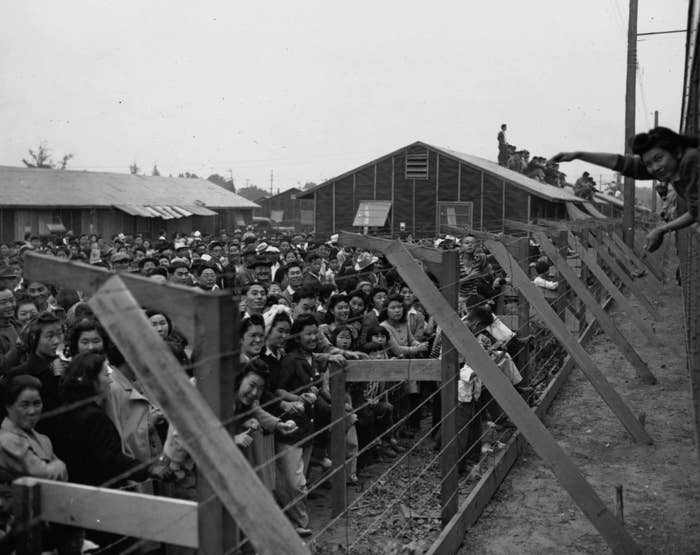
2. A guard tower at the Manzanar incarceration camp:
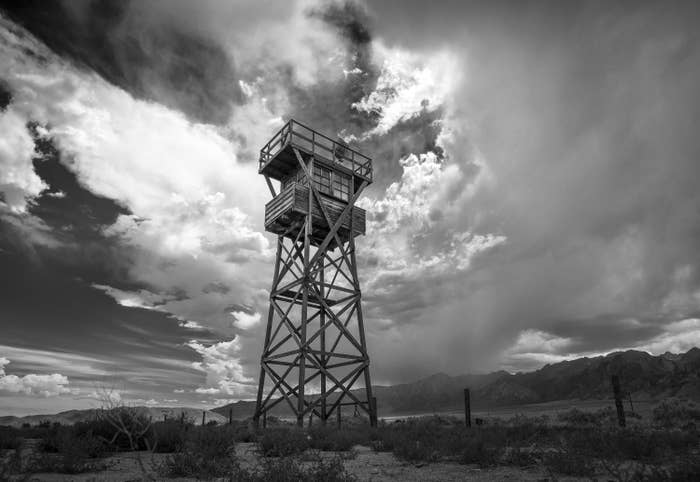
3. A soldier guards Japanese Americans at the Manzanar incarceration camp in California:
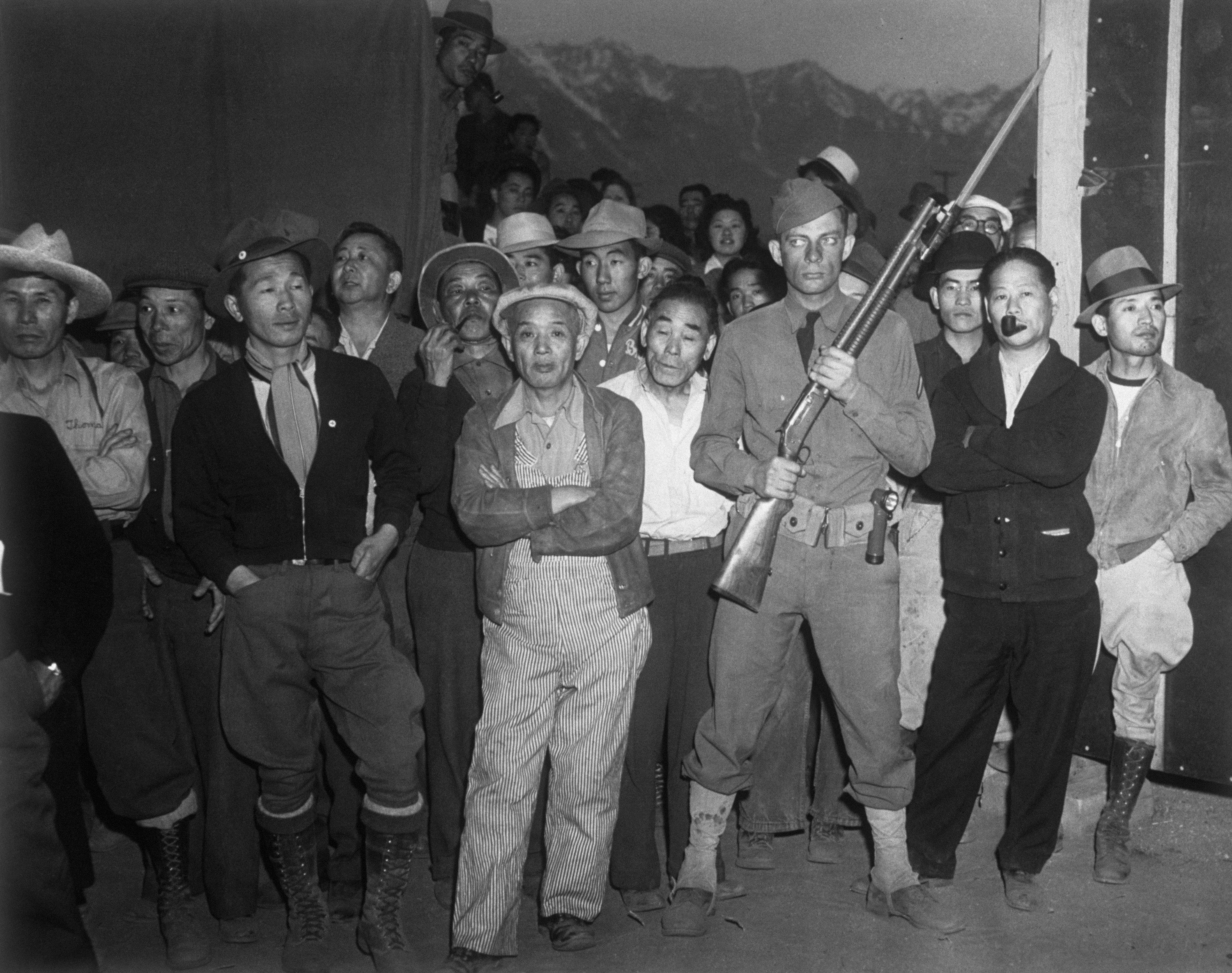
4. A police officer searches the luggage of Japanese Americans as they arrive at the Santa Anita incarceration camp in Los Angeles County, CA:

5. Japanese Americans in Los Angeles, CA watching a train take their friends and relatives to the Owens Valley incarceration camp:

6. A Japanese American WWI veteran proudly wears his uniform as he is accounted for at the Santa Anita incarceration camp:
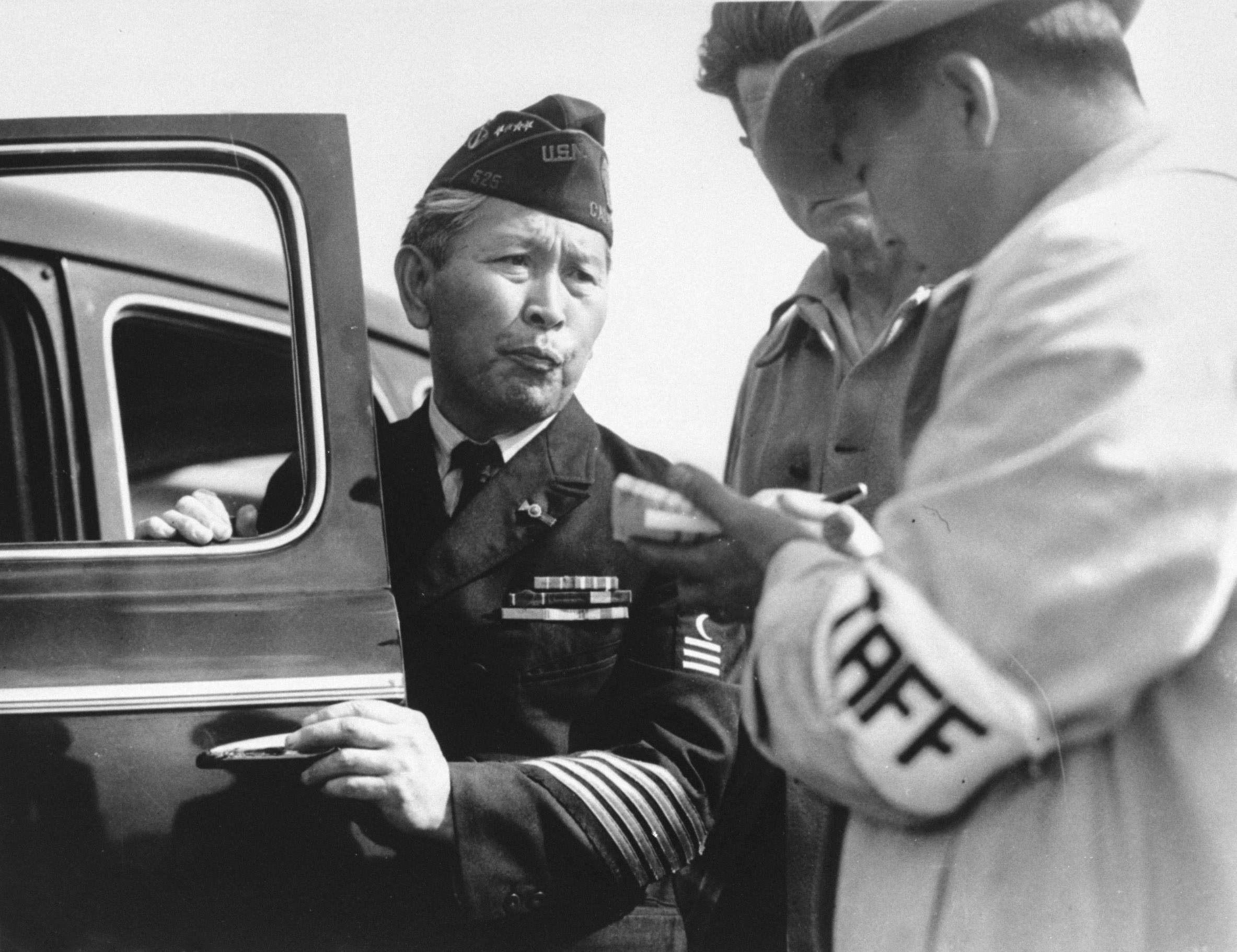
7. Young children wear identification tags at the incarceration camp in Hayward, CA:

8. Japanese Americans wave goodbye to friends and relatives being sent to separate incarceration camps in Pomona, CA:
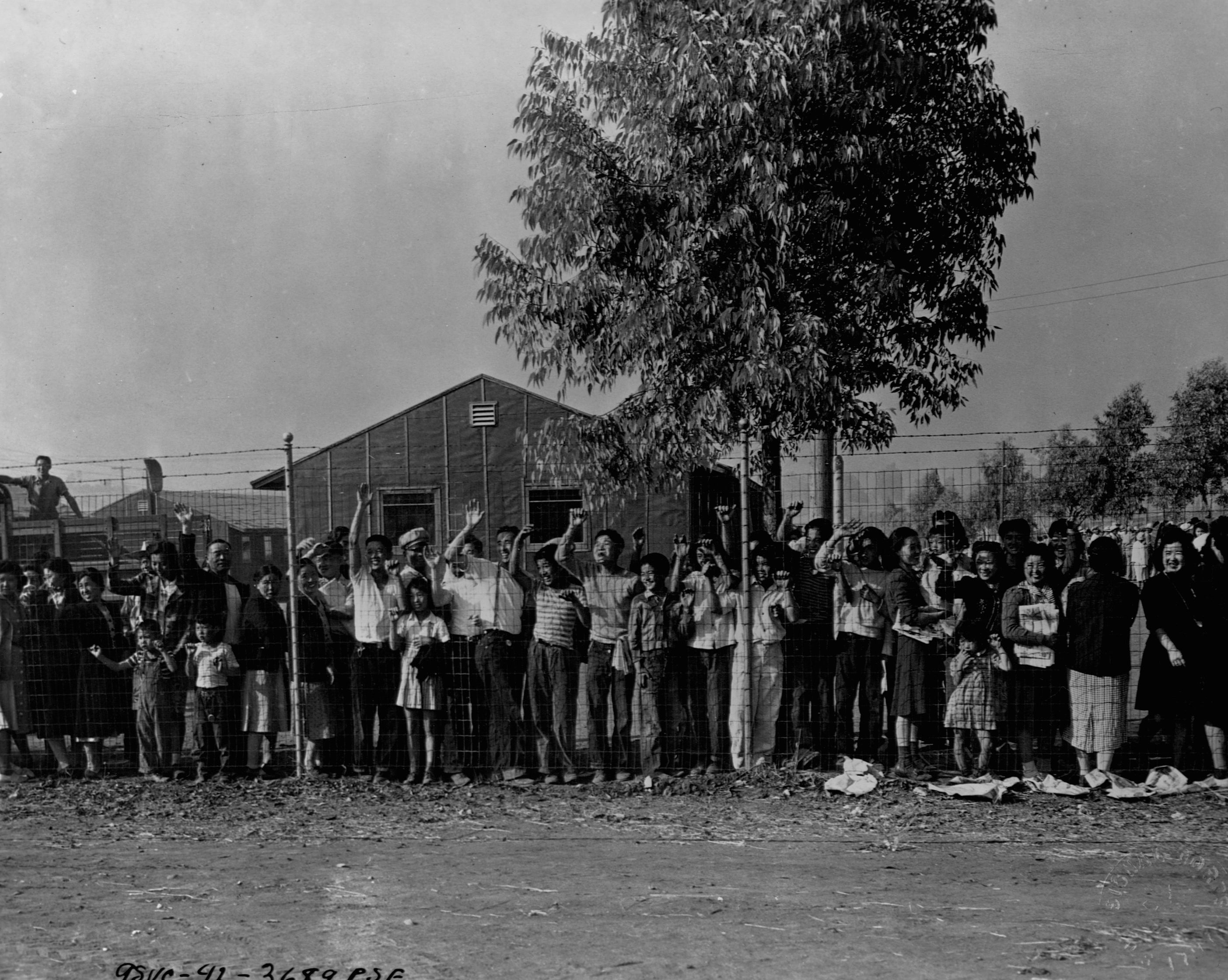
9. After the internment of Japanese Americans from the Seattle region, barber G.S. Hante points proudly to his bigoted sign:
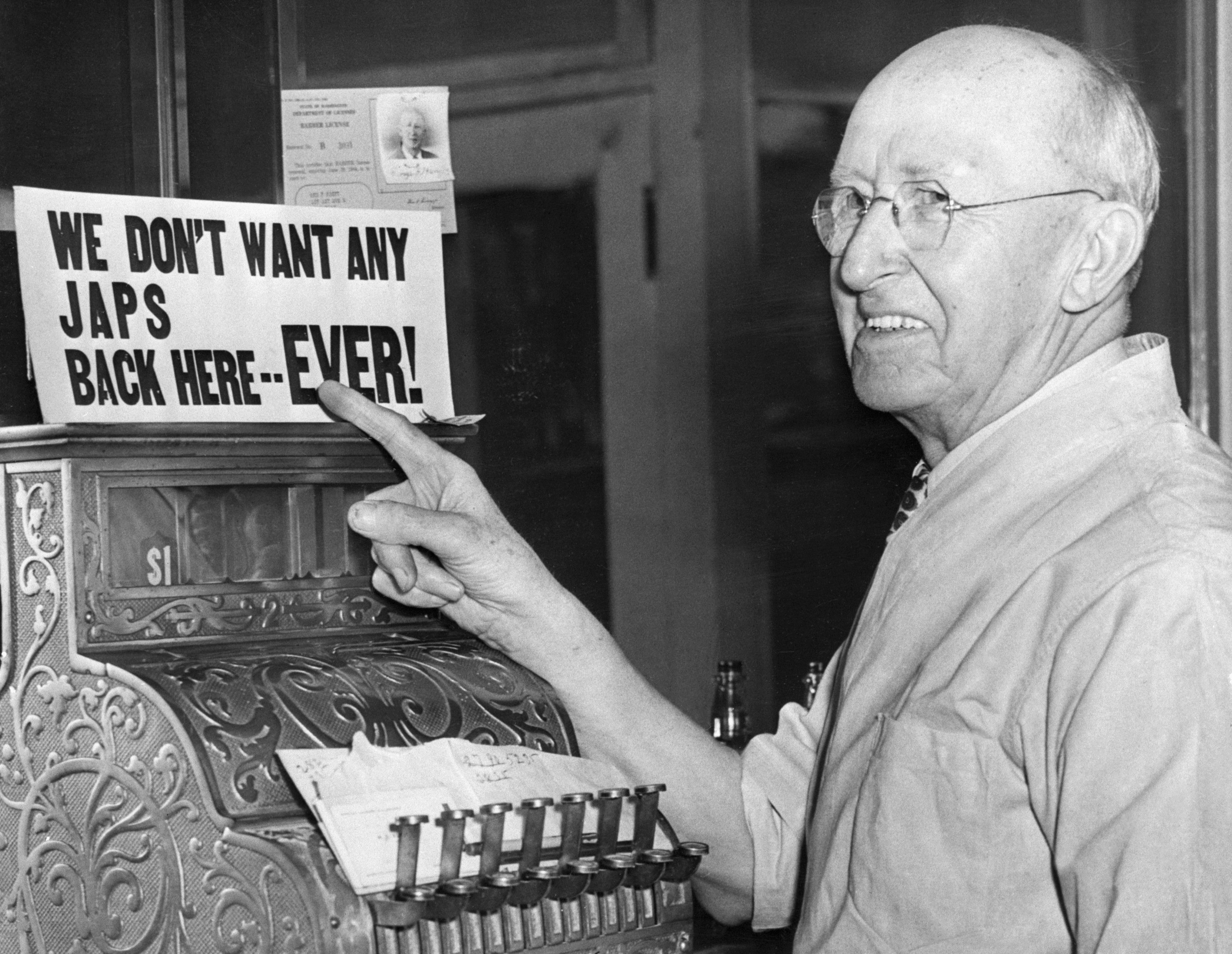
10. Japanese American girls show their patriotism as they parade with a Liberty Bell float while being held in an incarceration camp:
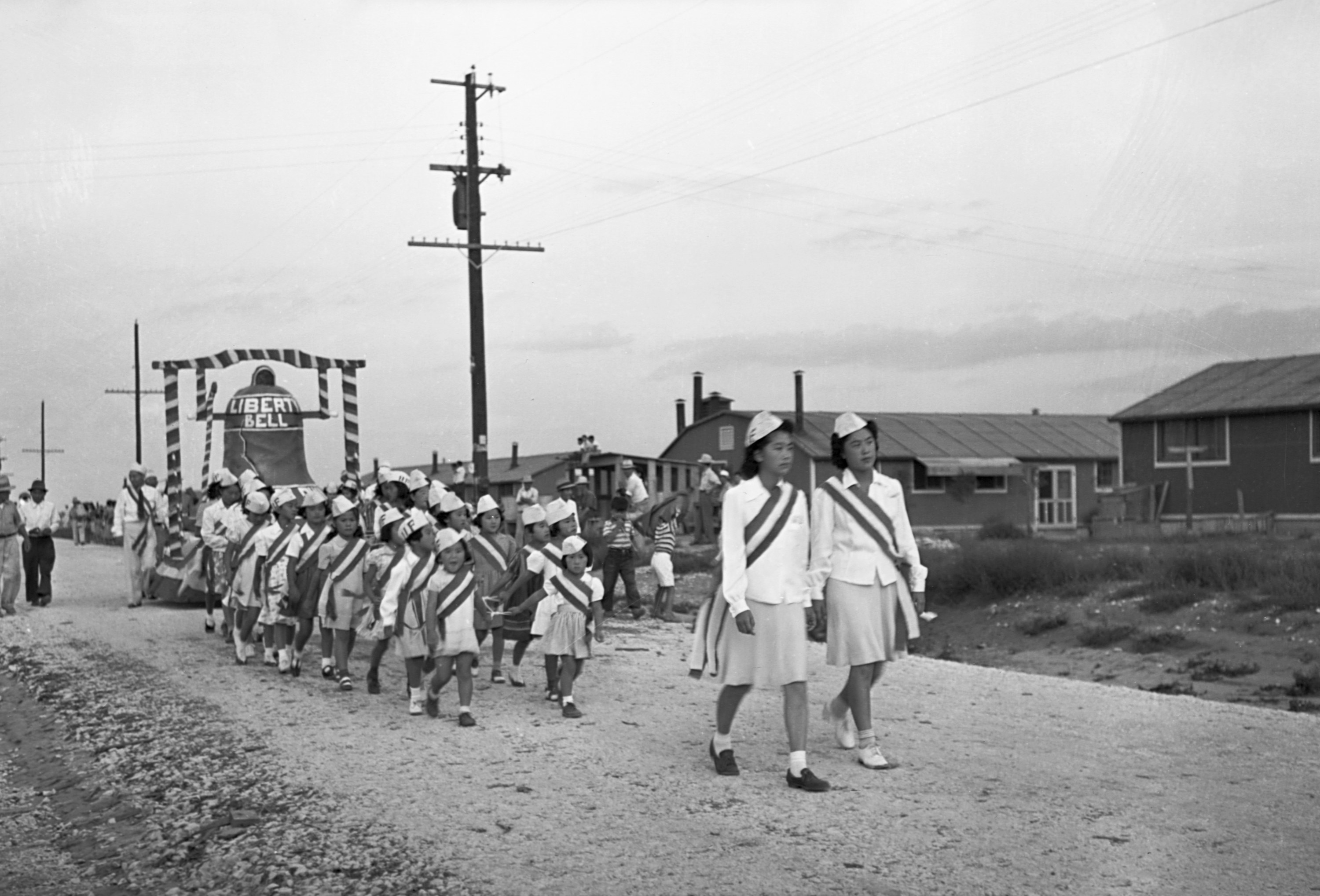
11. Japanese Americans farming at the Manzanar incarceration camp:
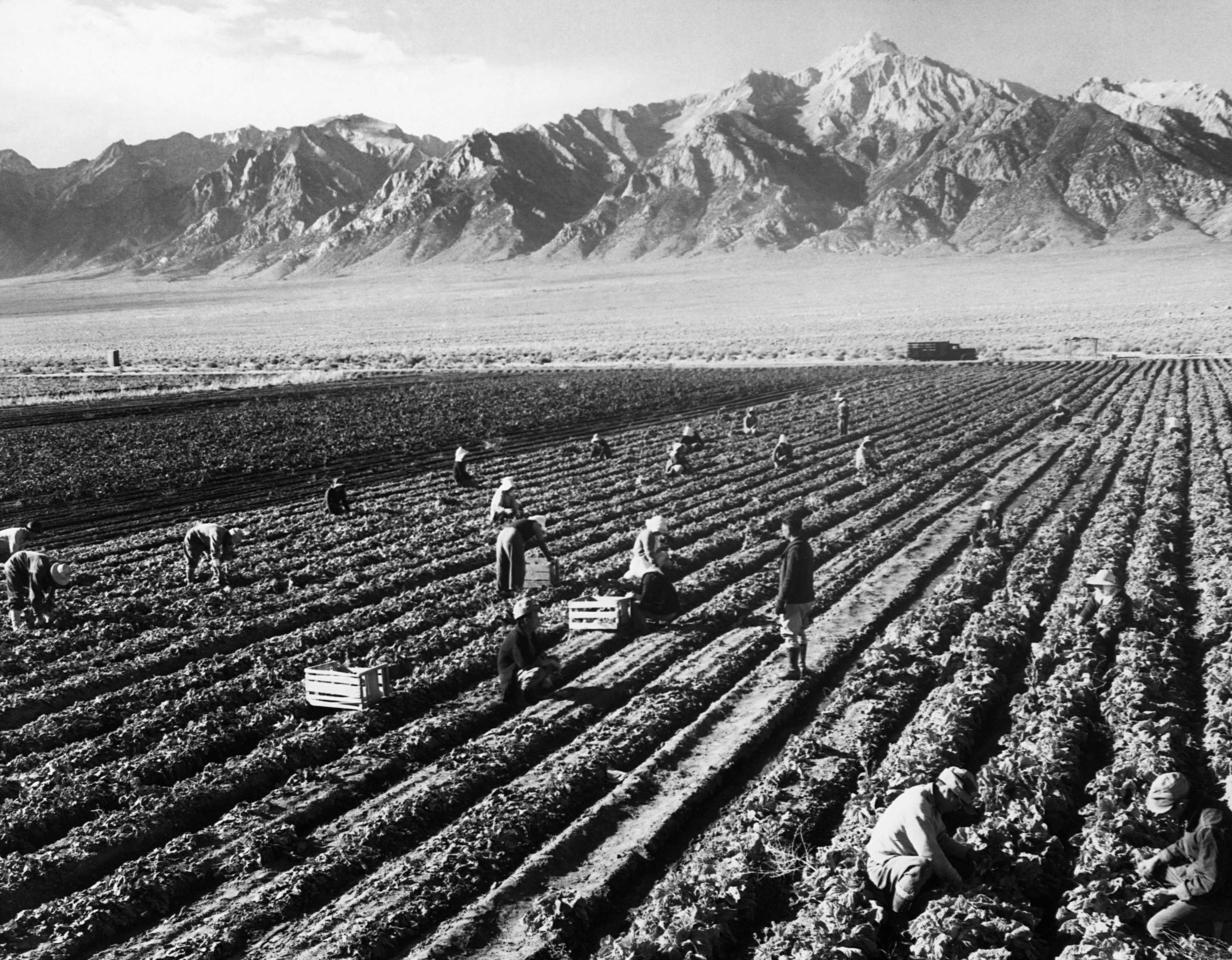
12. Newly incarcerated Japanese Americans line up outside for food at the Tanforan incarceration camp in San Bruno, CA:

13. Japanese Americans line up outside a train after arriving at Santa Anita incarceration camp as a row of US soldiers face them:
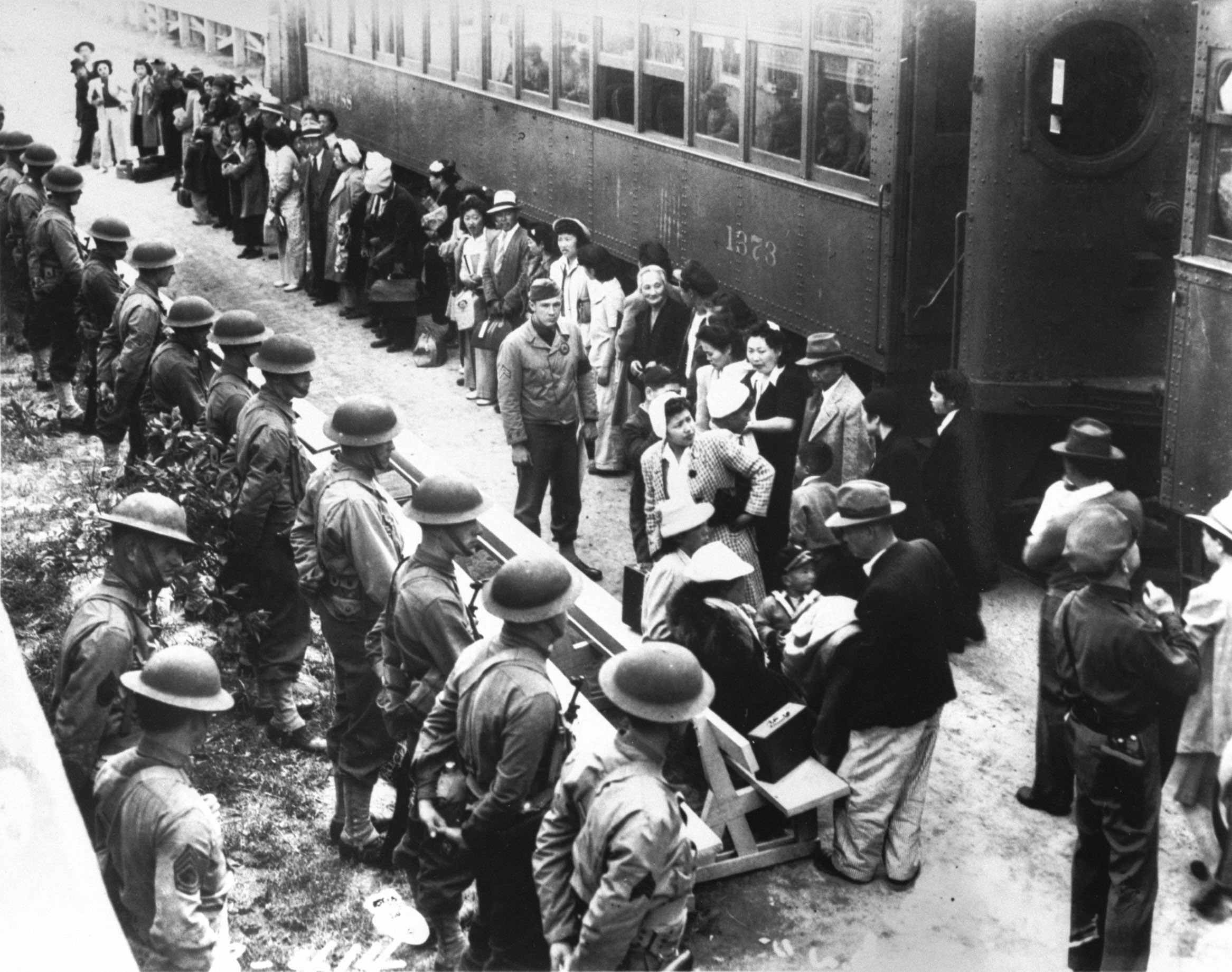
14. A sign hanging in the window of a shop owned by a Japanese Americans in Little Tokyo, Los Angeles, CA thanks customers for their patronage as the shop is closed and the family is sent to an incarceration camp:
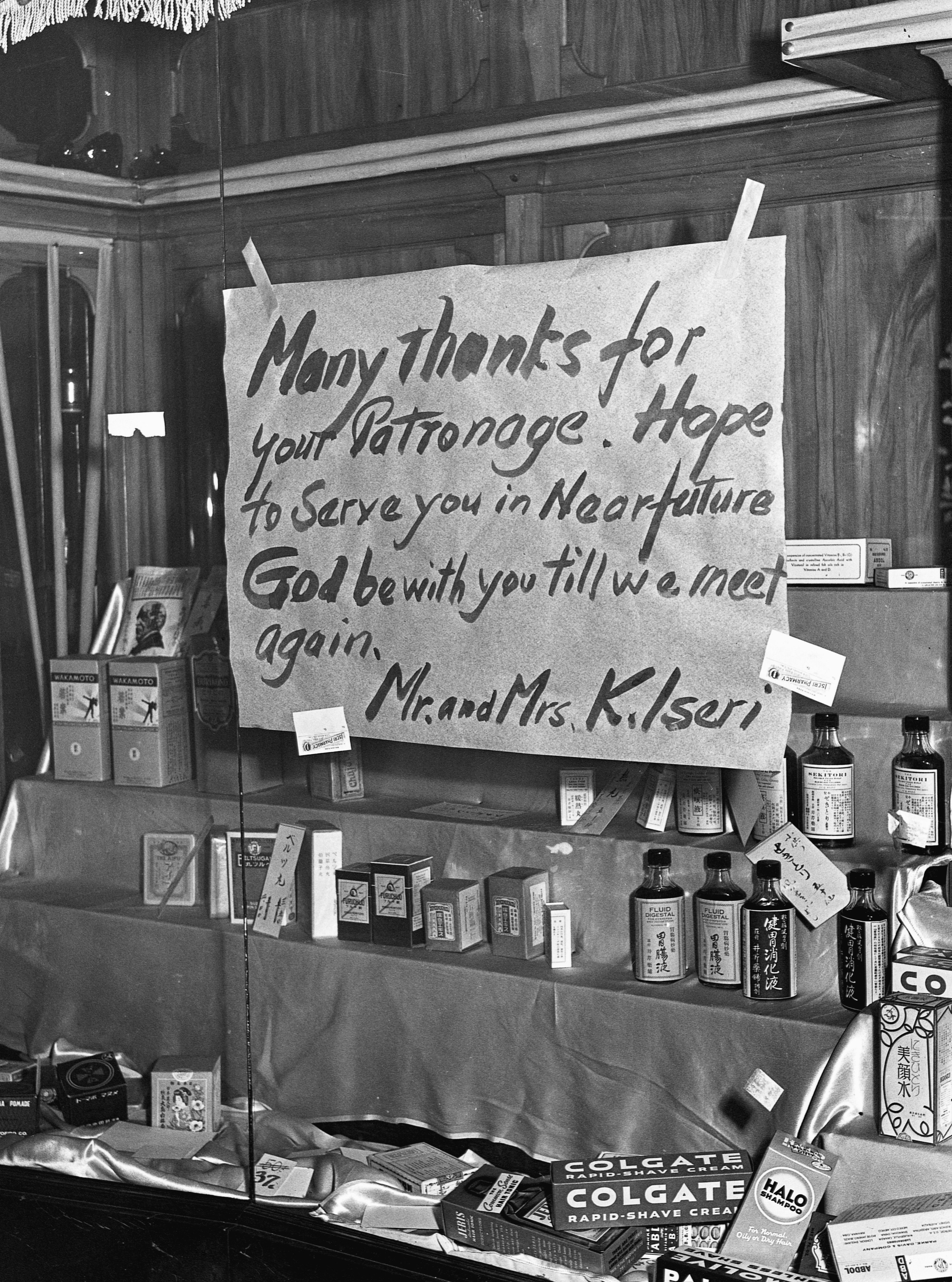
15. An elderly Japanese American man awaits incarceration, wearing a tag with his name and camp destination, in Centerville, CA:

16. Japanese American men in barracks at the incarceration camp in Tule Lake, CA:
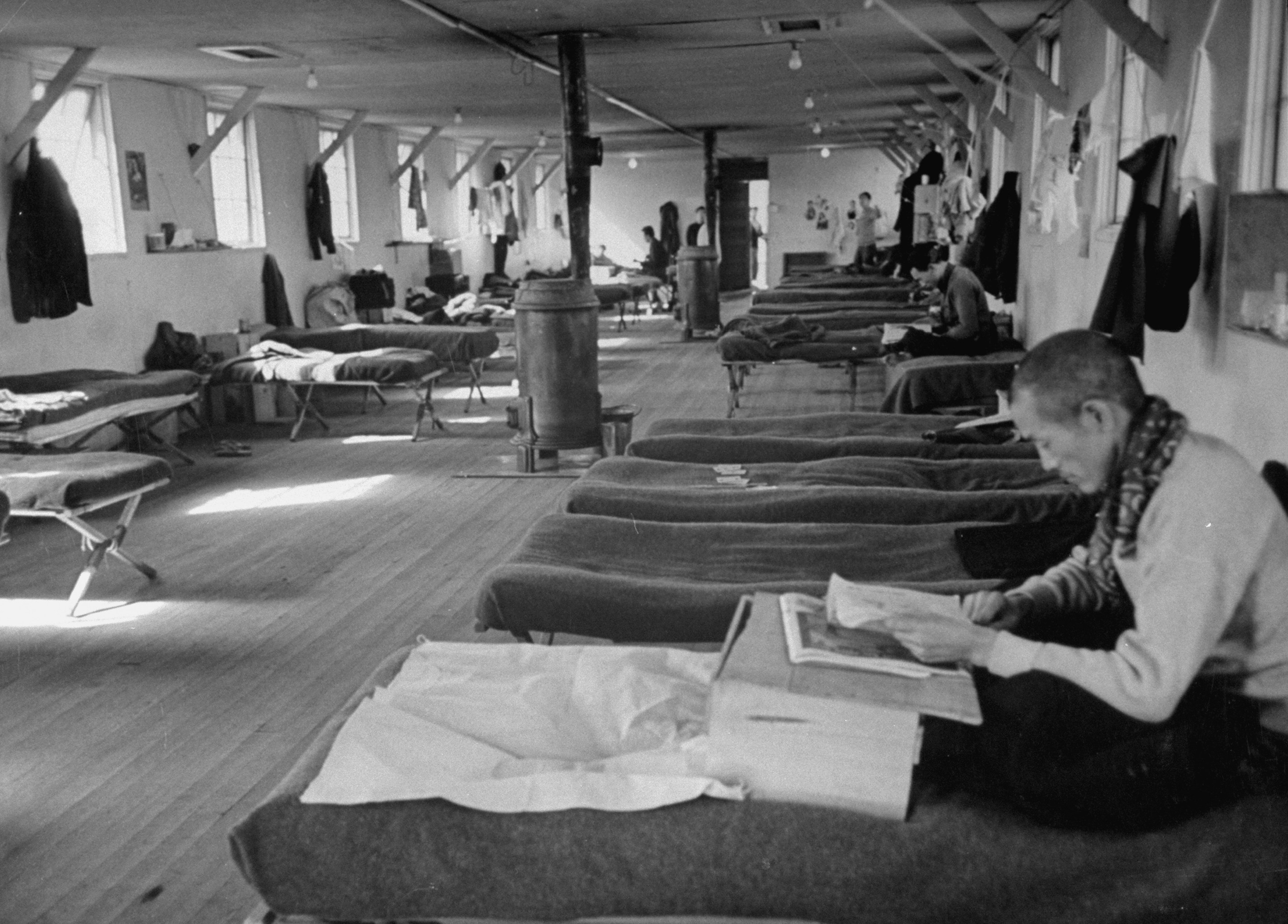
17. Japanese American men held in incarceration camps in Colorado help relieve the farm labor shortage there; Colorado farmers W.W. Tomlinson (l) and C.A. Wilcox (r) say the Japanese are excellent farmworkers:
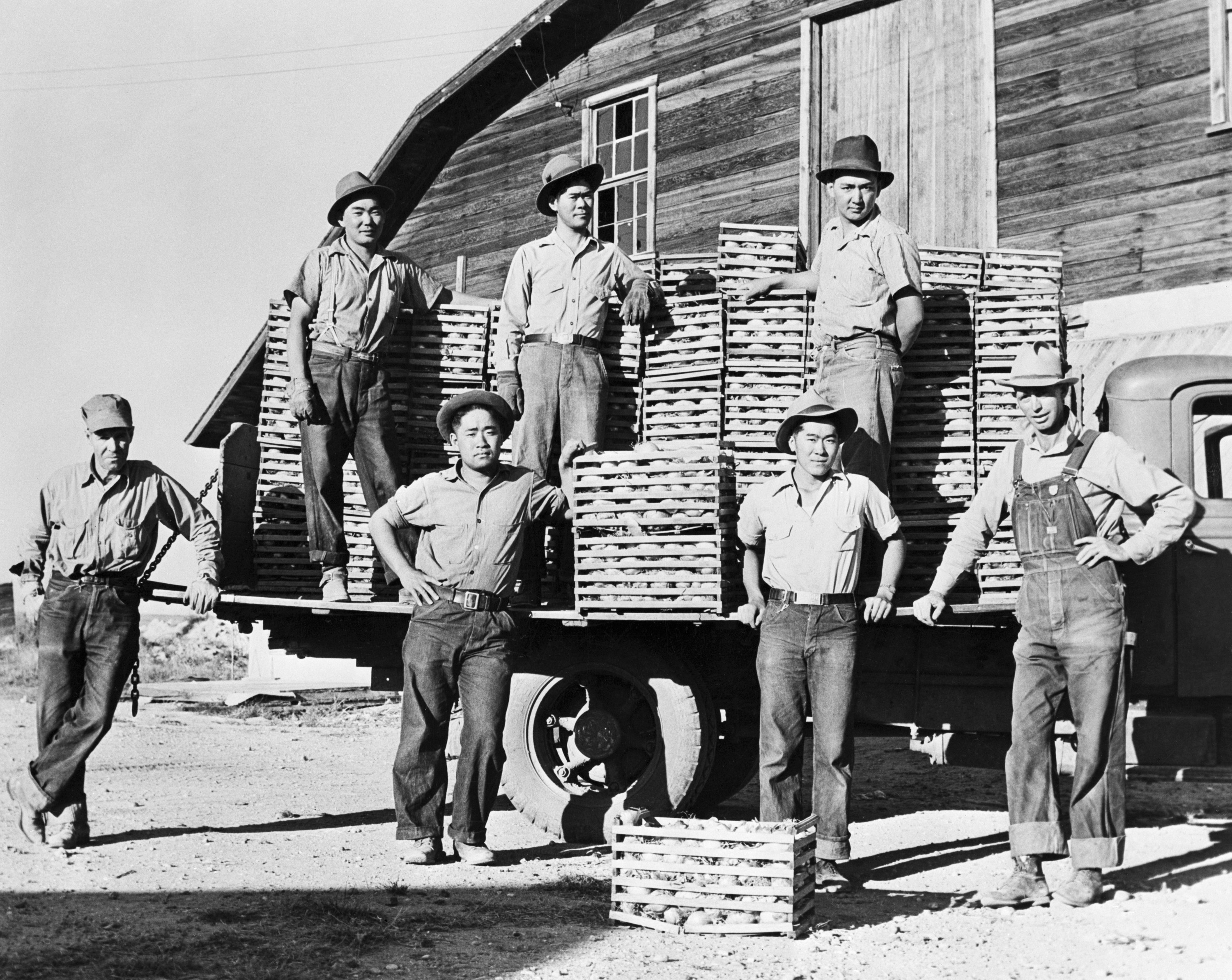
18. Phil Hara is in charge of work-offer signs in an incarceration camp:
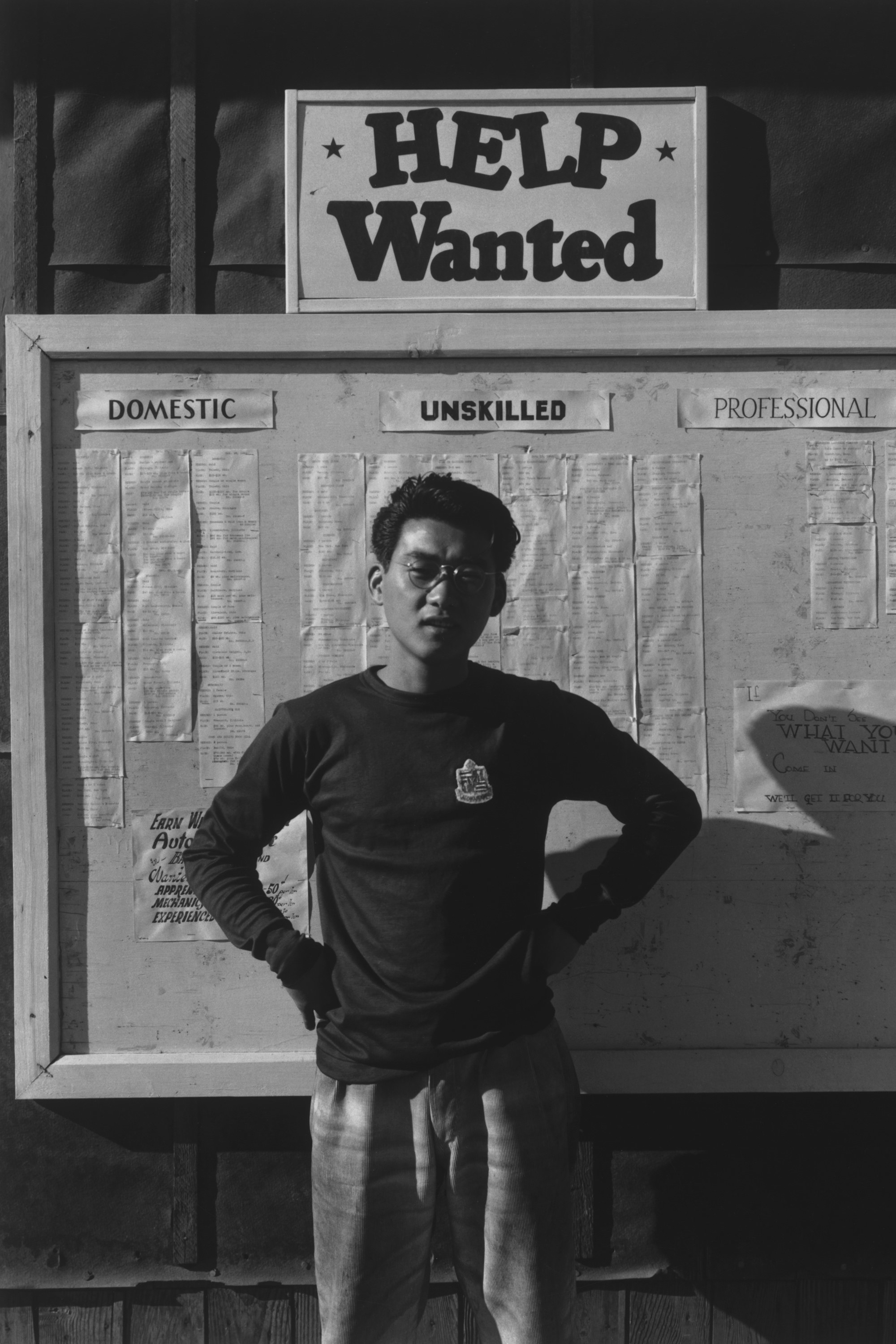
19. A sign put up by the Matsuda family, owners of the Wanto Co grocery store, after the attack on Pearl Harbor; the store was later closed and the family was sent to an incarceration camp:
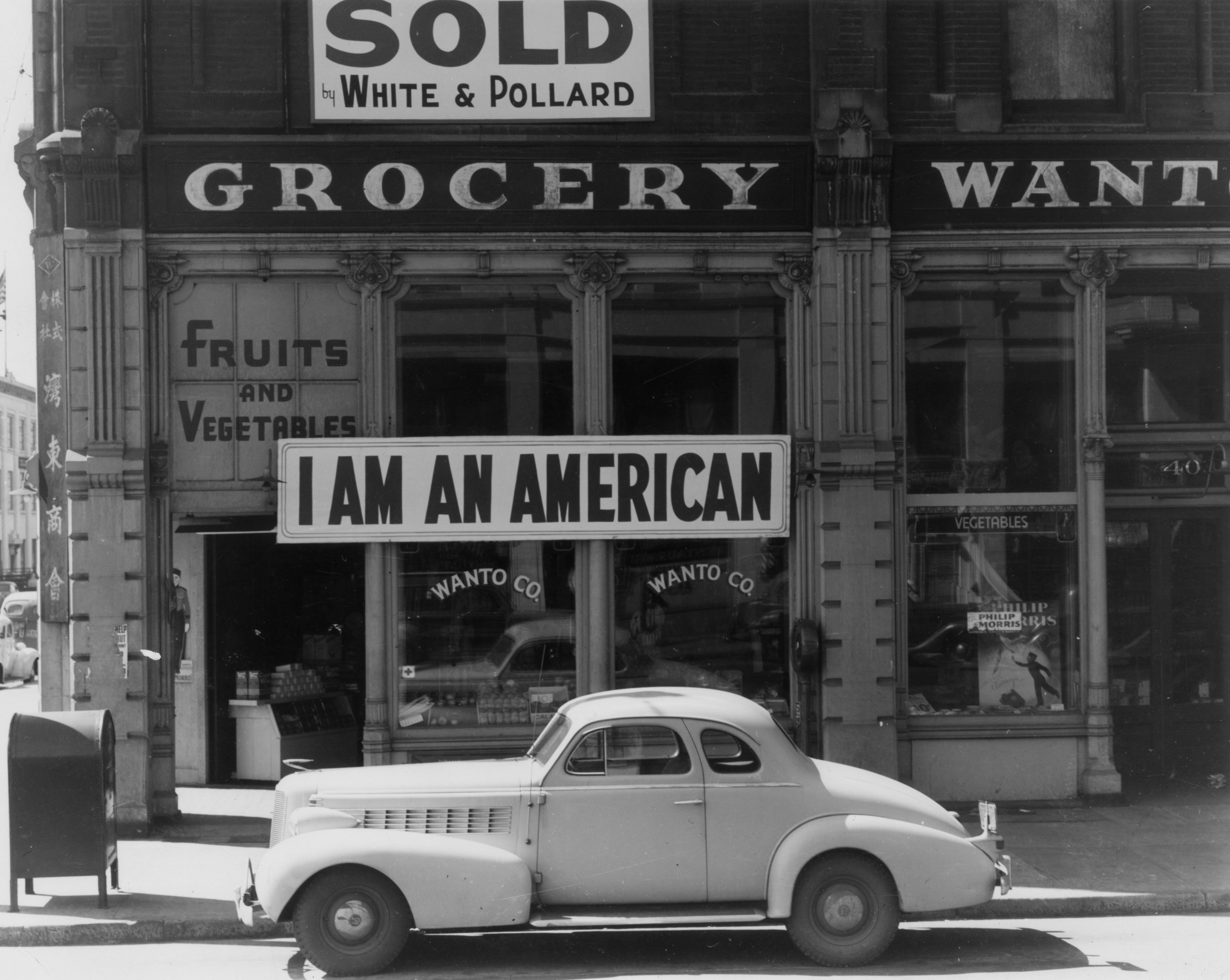
20. Japanese Americans are inoculated as they are registered for incarceration in San Francisco, CA:
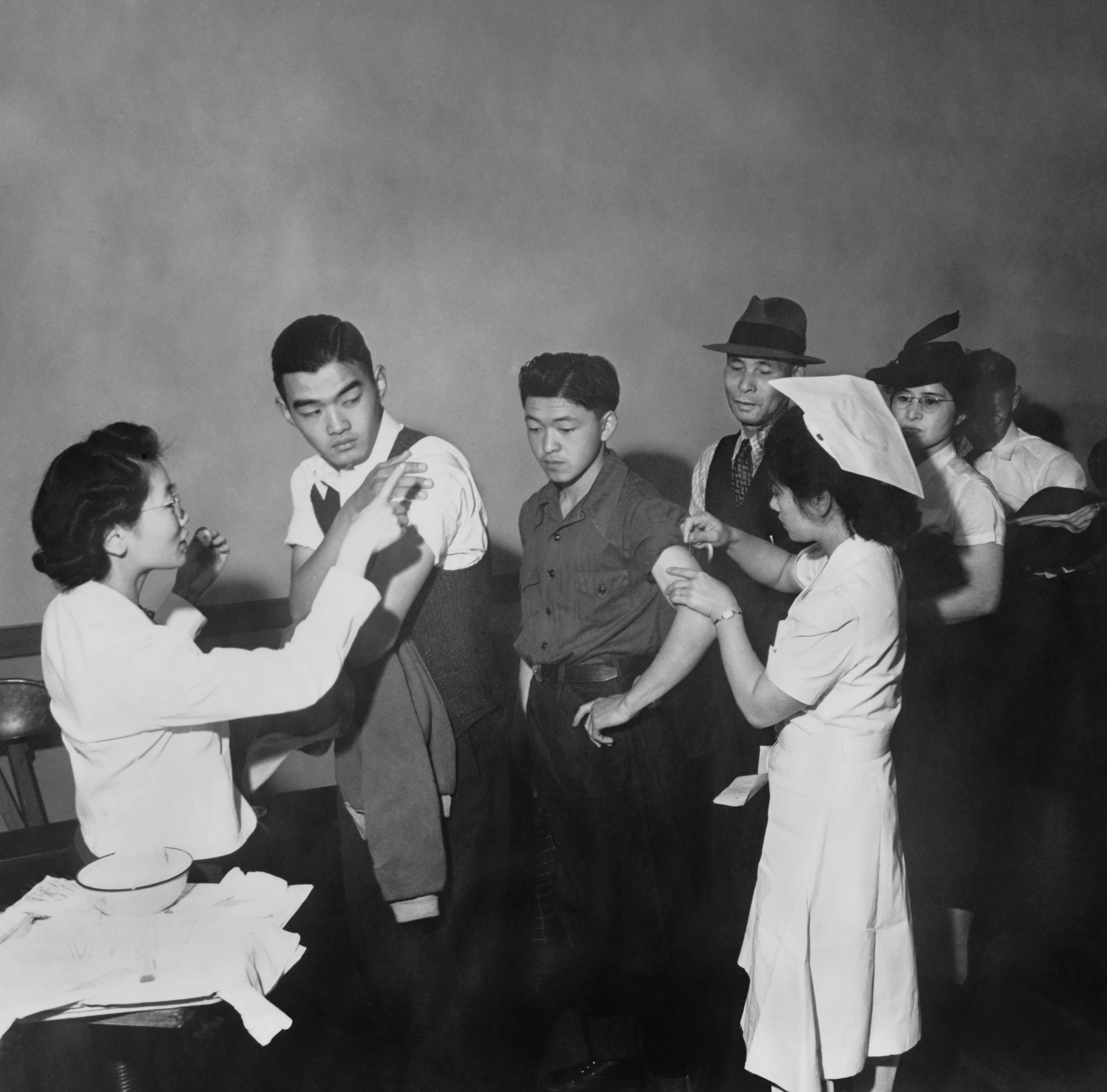
21. Japanese American men work at the incarceration camp in Tule Lake, CA:
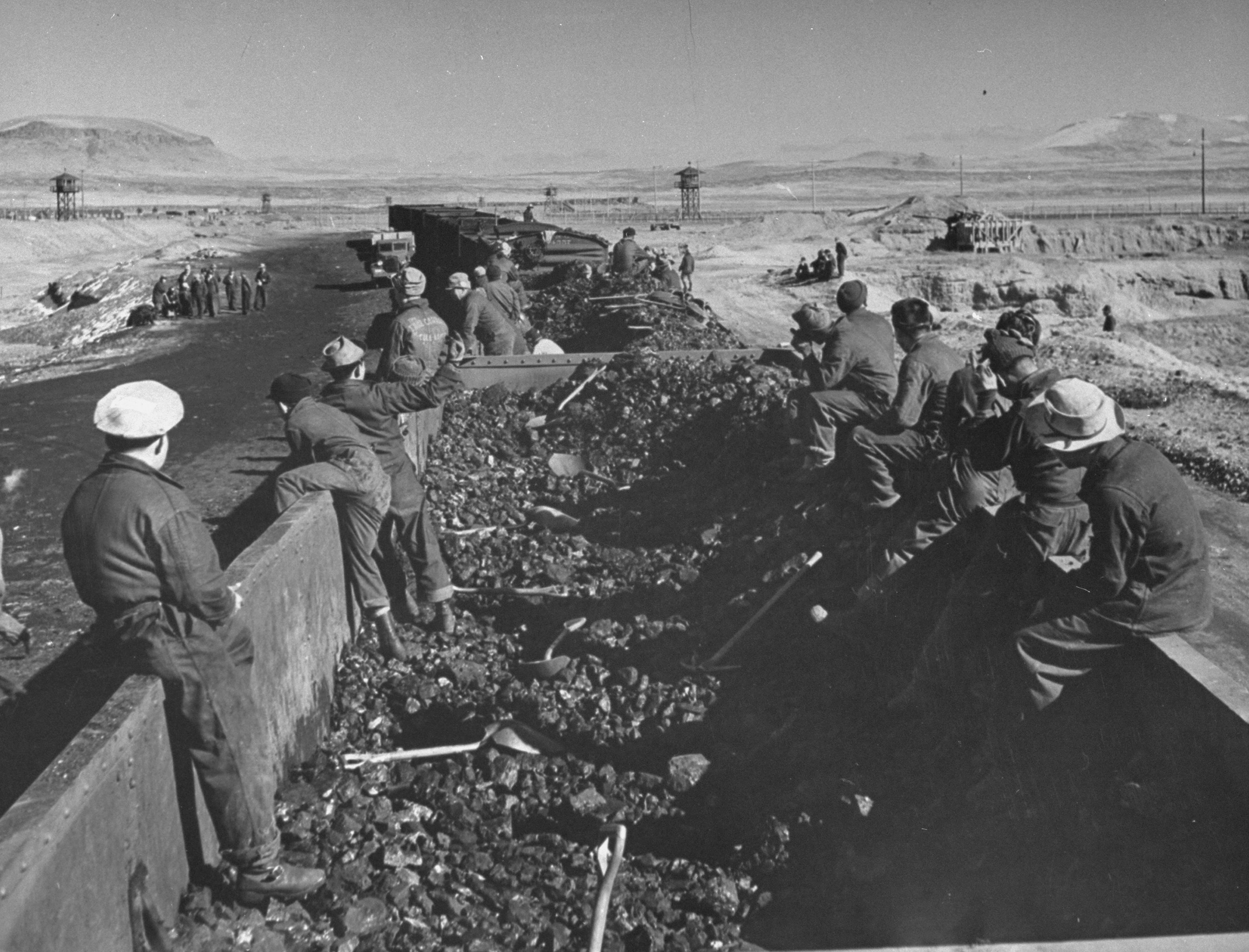
22. A Japanese American woman identifies her baggage at the incarceration camp before being transferred to another camp in Salinas, CA:
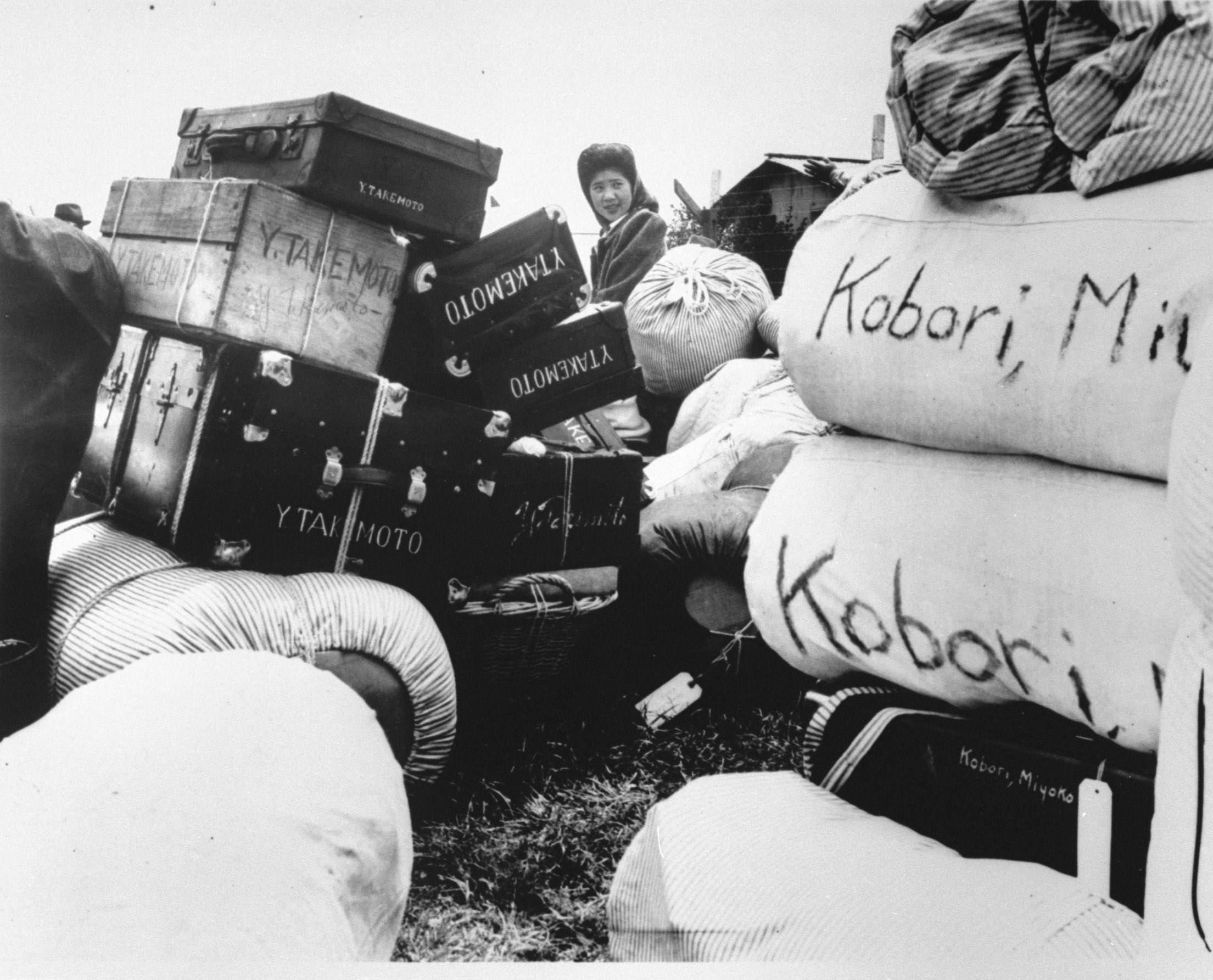
23. Japanese American shopkeepers are forced to close their businesses when the American government forcibly moves them into incarceration camps:
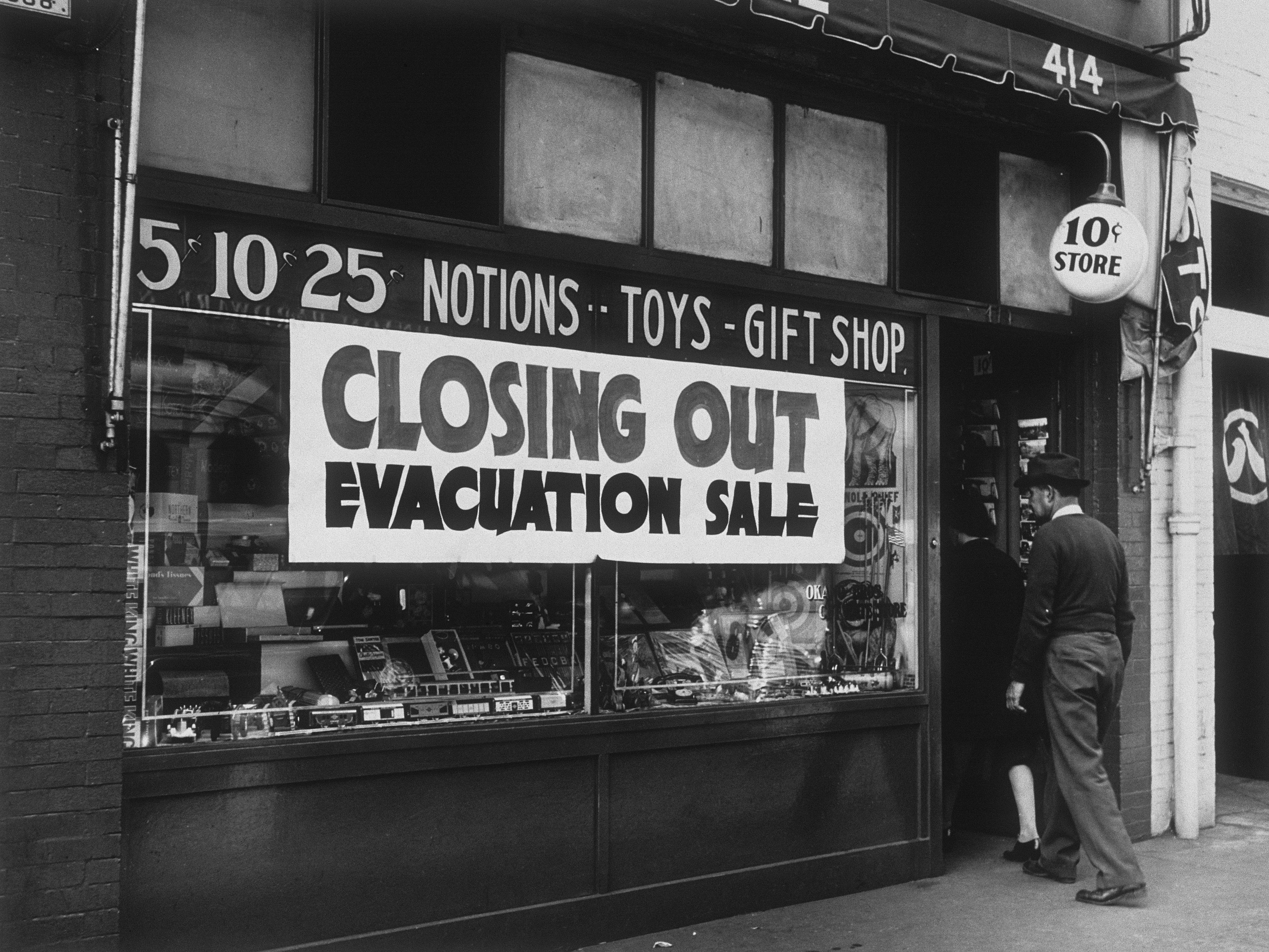
24. A school in an incarceration camp in Minidoka, ID, with a white teacher in a barrack-type building with seating and equipment made in the camp:

25. The Tule Lake incarceration camp, the largest camp where Japanese Americans were incarcerated:
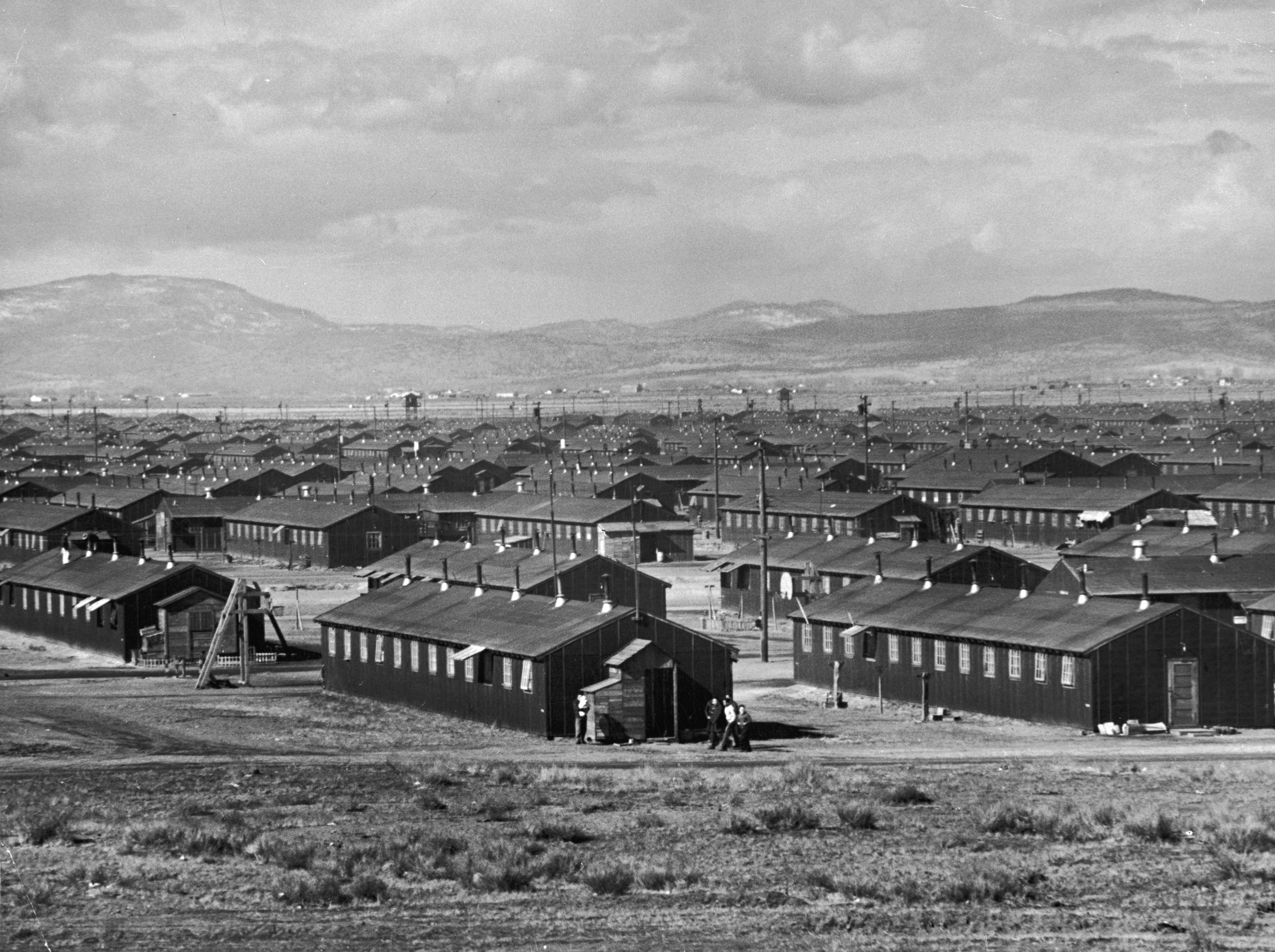
26. Names of Japanese Americans held at the internment camp in Tule Lake are painted on rock:
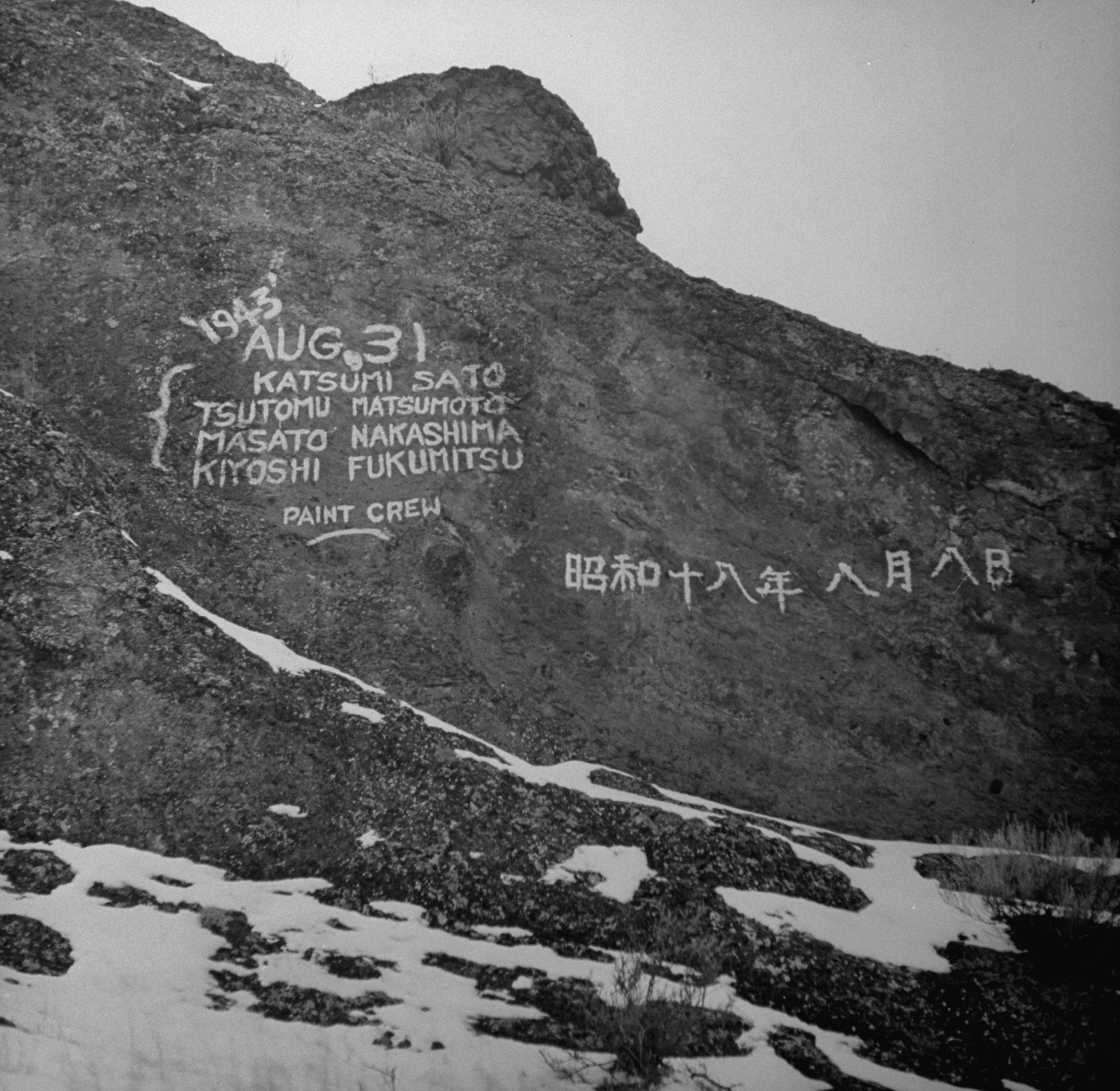
27. Japanese American men work on camouflage nets at the incarceration camp in Santa Anita, CA:
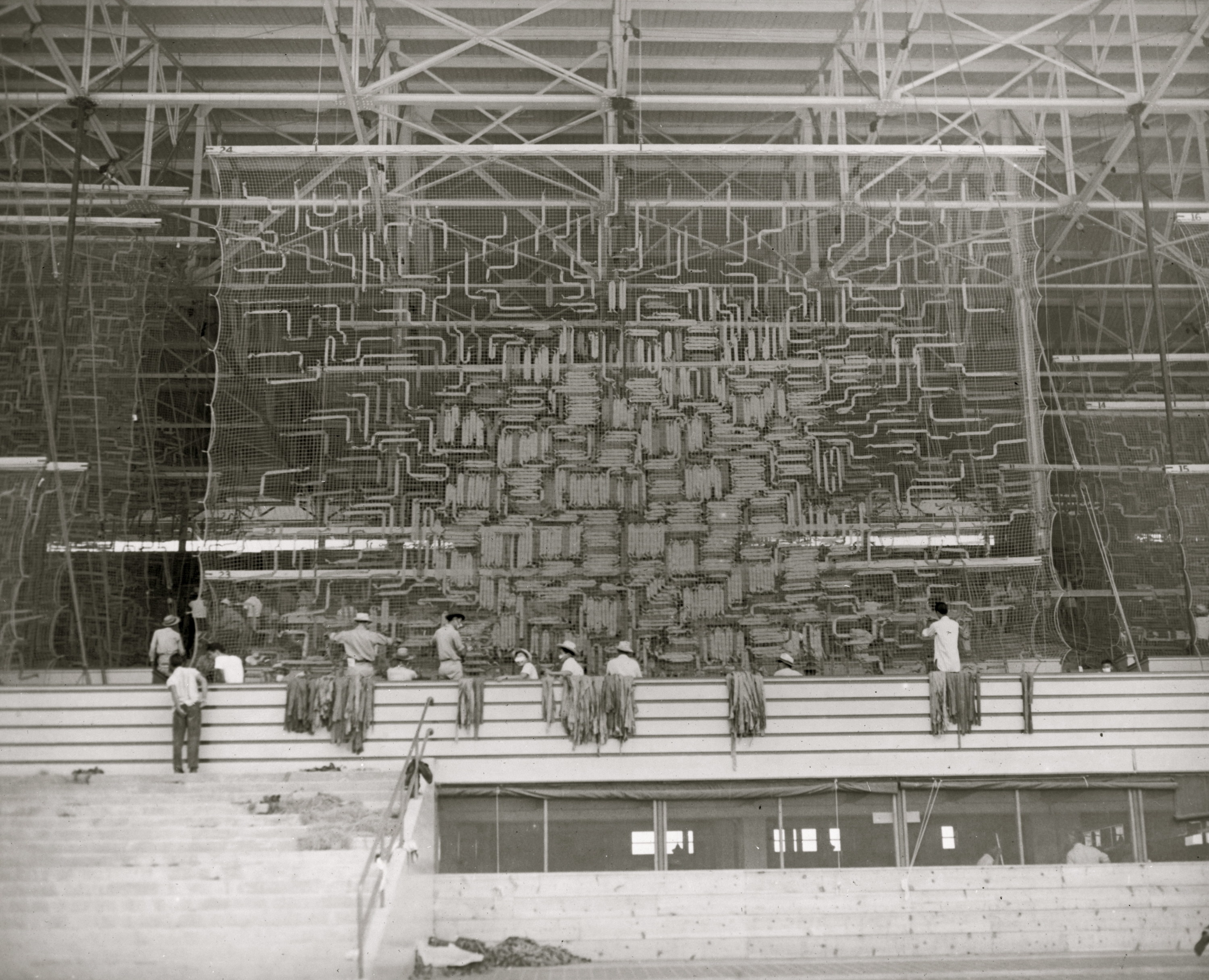
28. Dinner is served at the Heart Mountain incarceration camp in California:
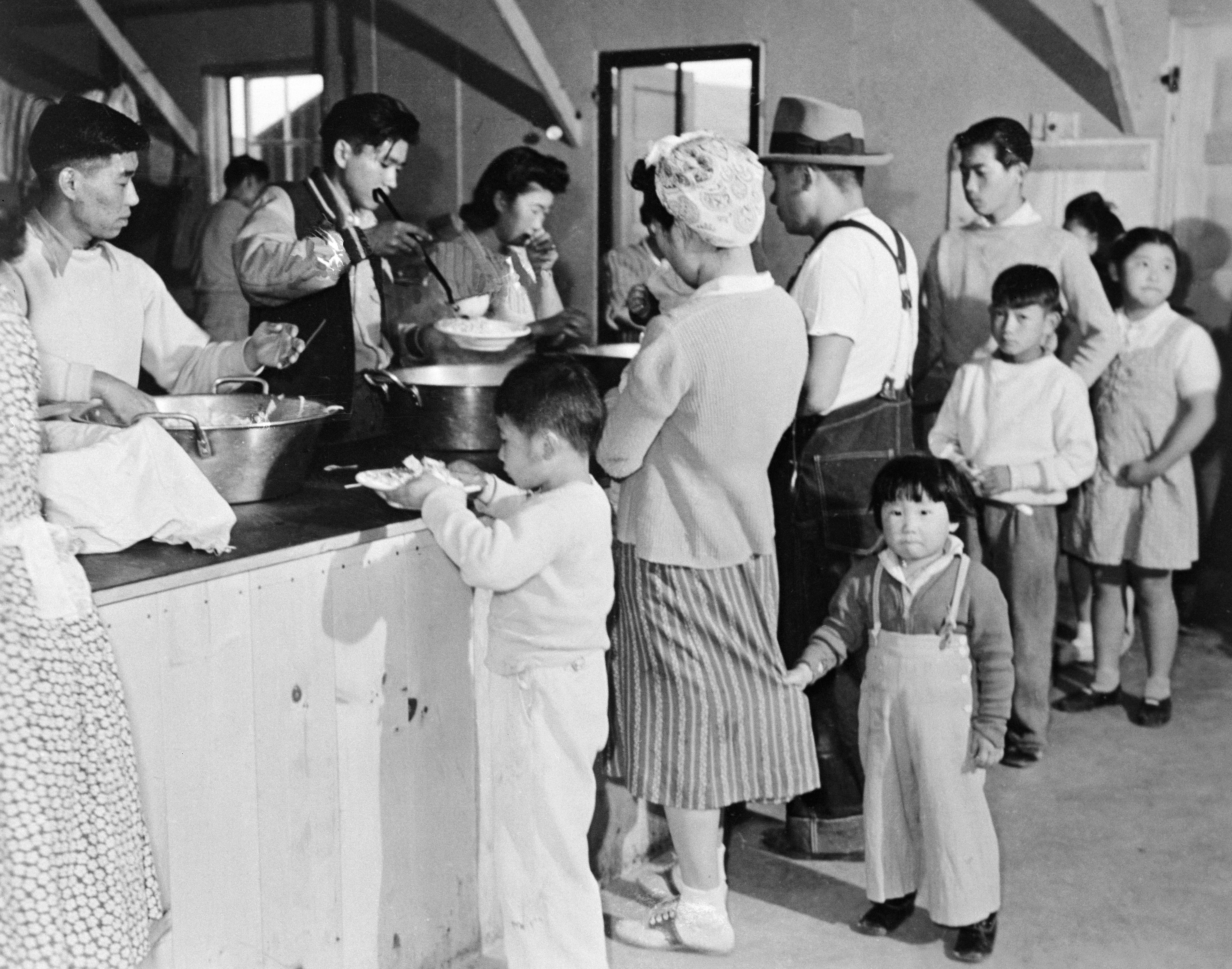
29. A Japanese American family in Los Angeles, CA tries to sell their belongings before they are incarcerated:
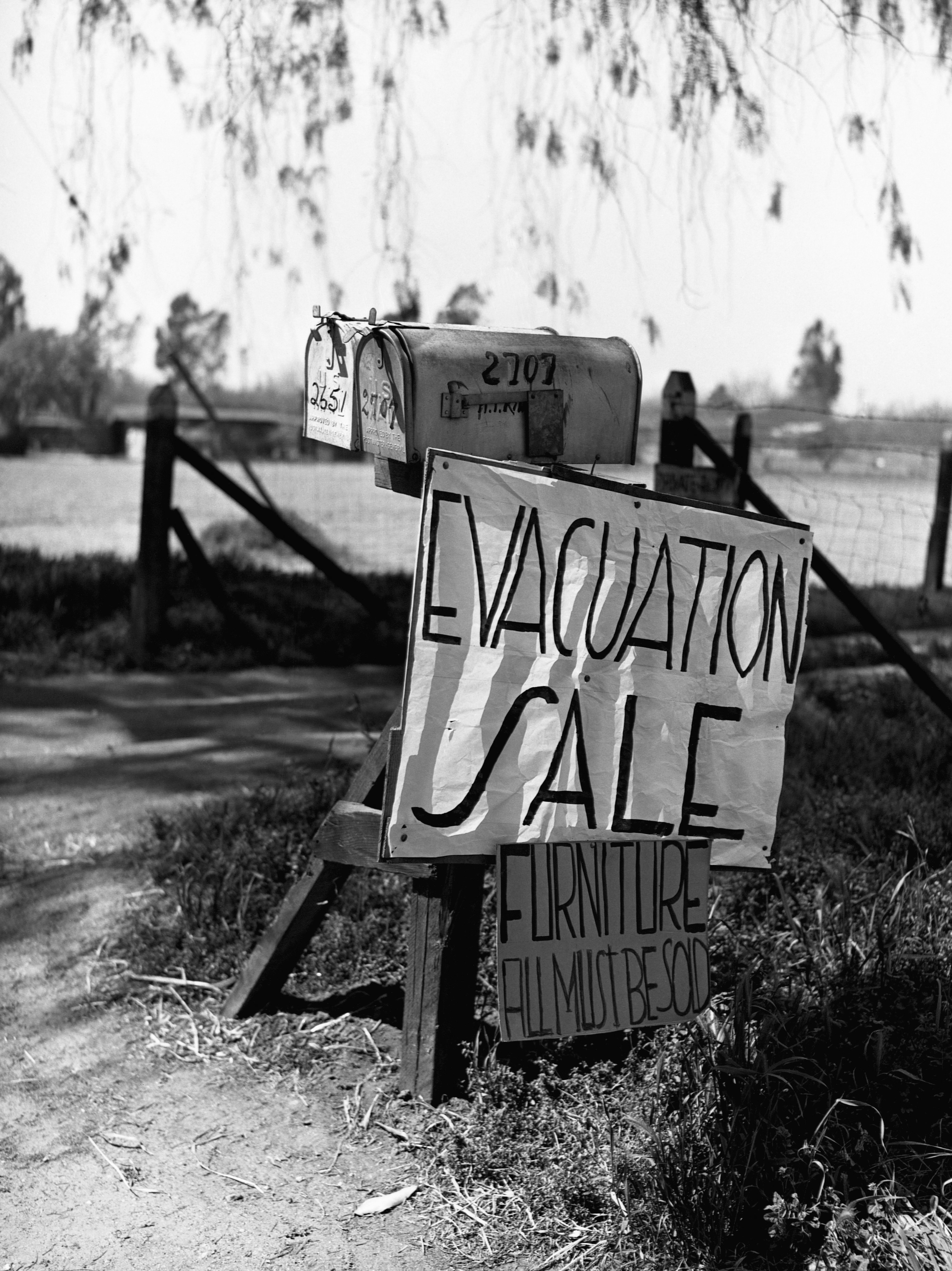
30. In the Guyaule Laboratory at the Manzanar incarceration camp, Frank Hirosama and his assistant work near large trash cans:

31. The incarceration camp in Tule Lake, CA:
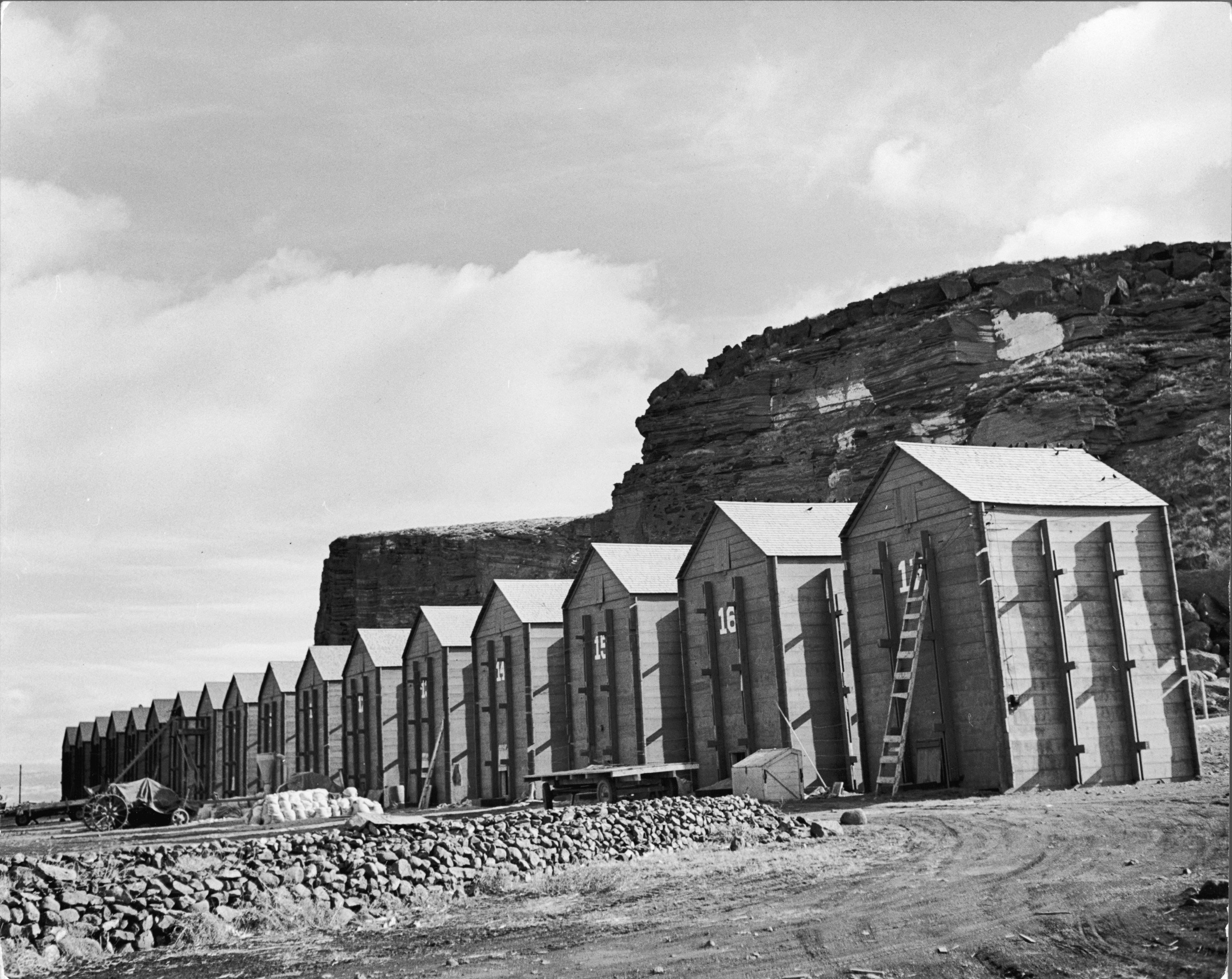
32. Japanese Americans register for mandatory incarceration in California:

33. The morning after their arrival, Japanese American men prepare to clear the land near the Manzanar incarceration camp for spring planting:
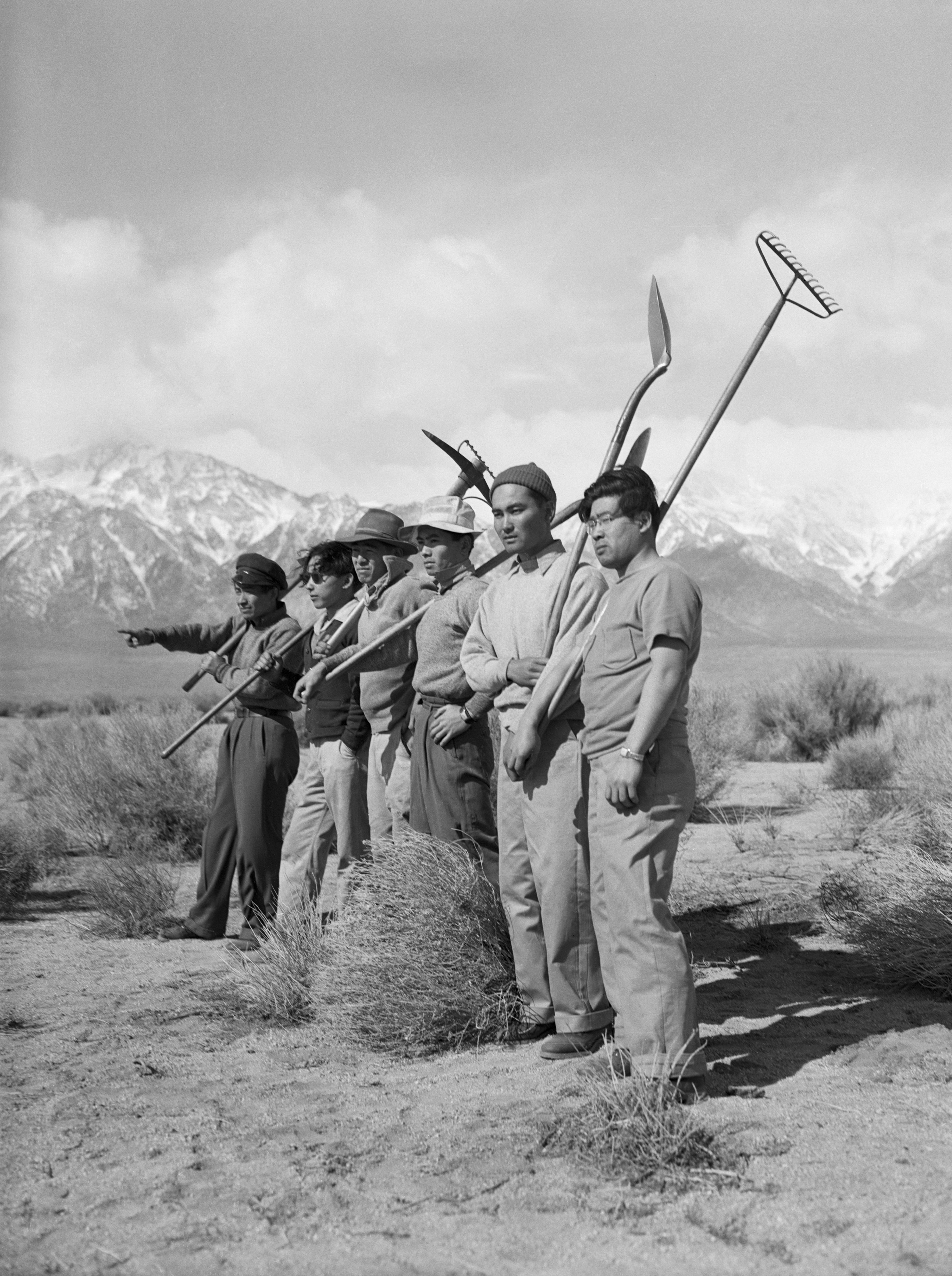
34. Children in the Tule Lake incarceration camp in California:

35. A young Japanese American girl waits alone with her family's baggage for a bus to an incarceration camp:
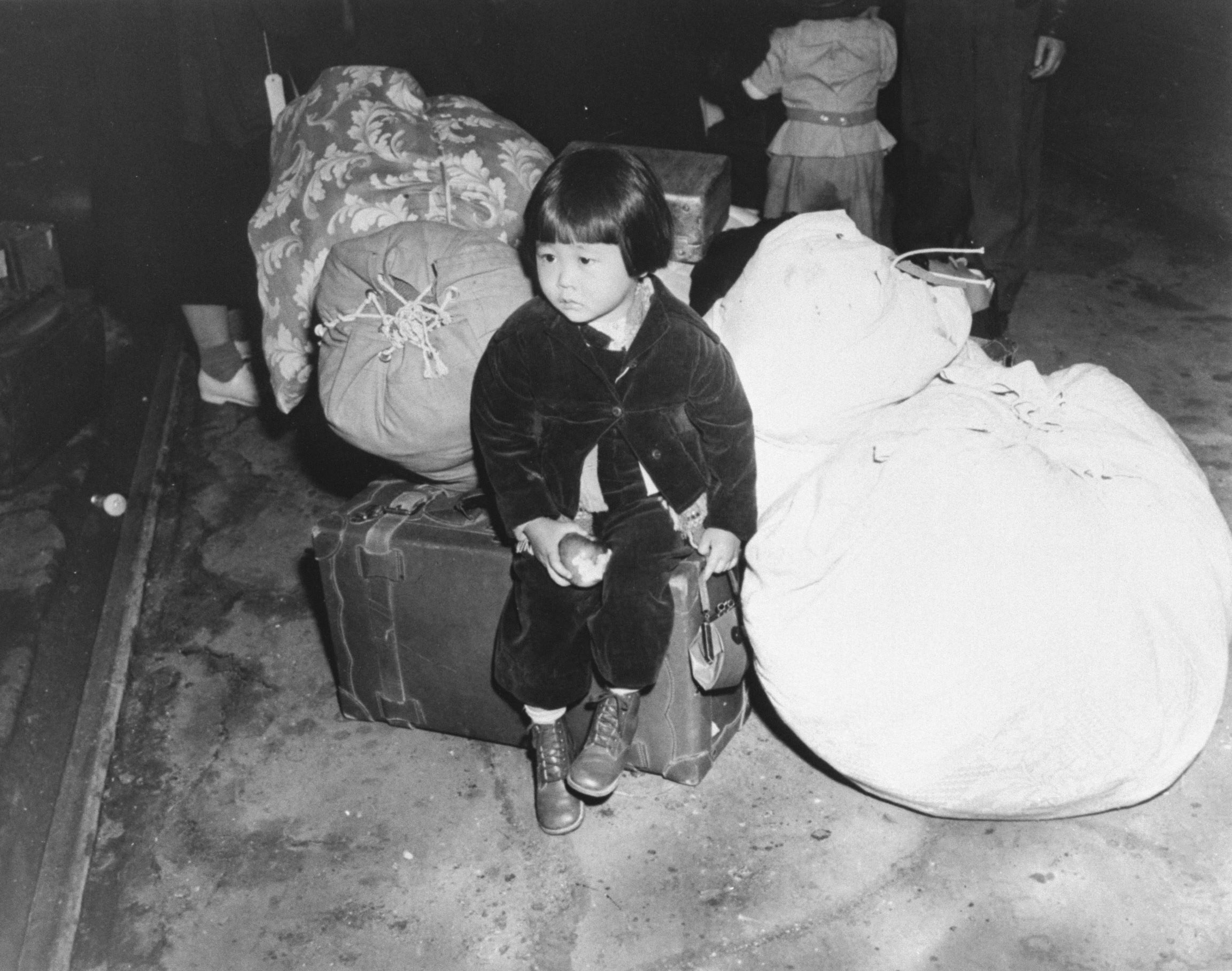
36. A family unit that was converted from horse stalls at the Tanforan incarceration camp, which was originally a racetrack, in San Bruno, CA:
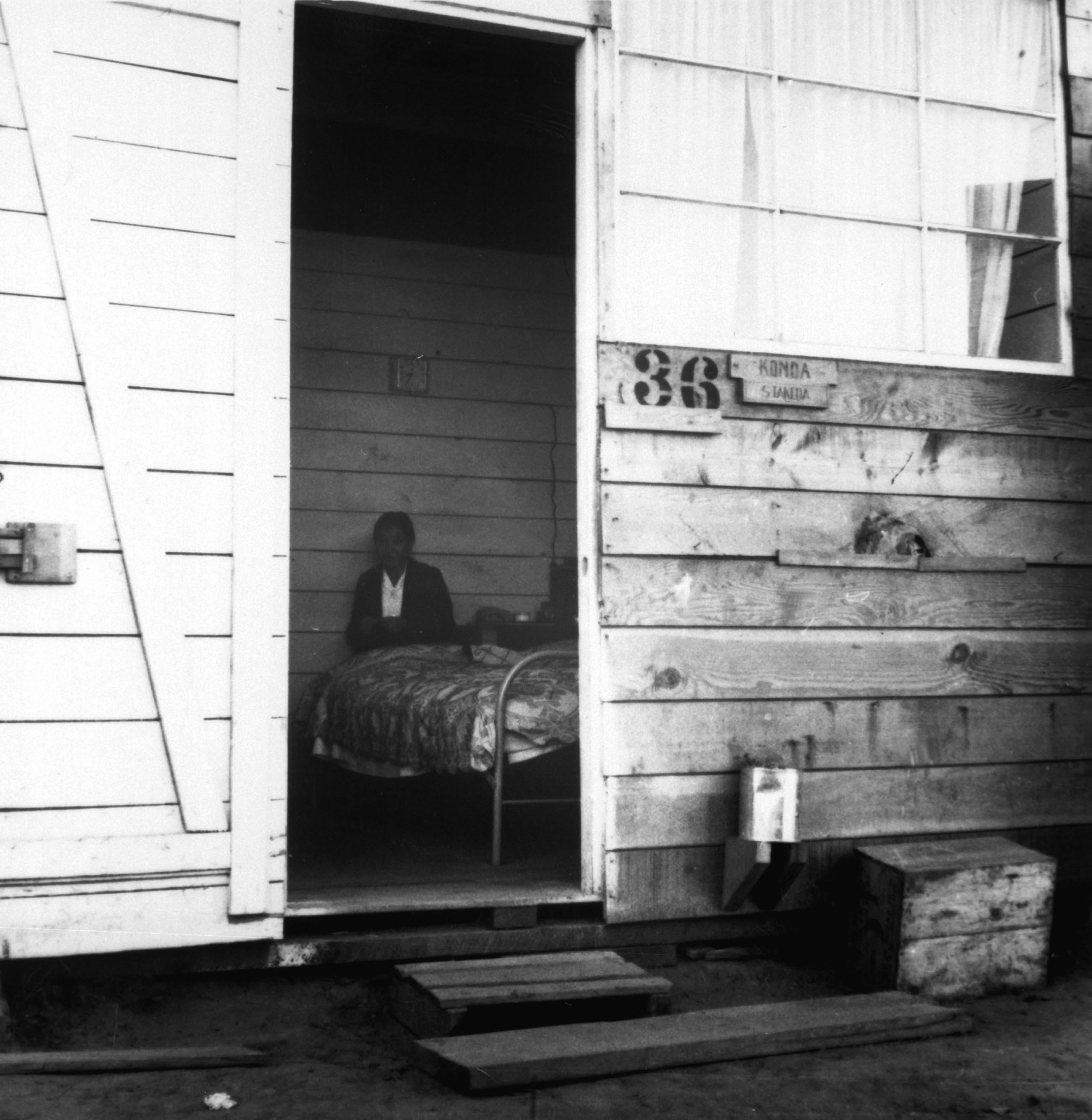
37. Two Japanese Americans run through the barracks during a dust storm at an incarceration camp:
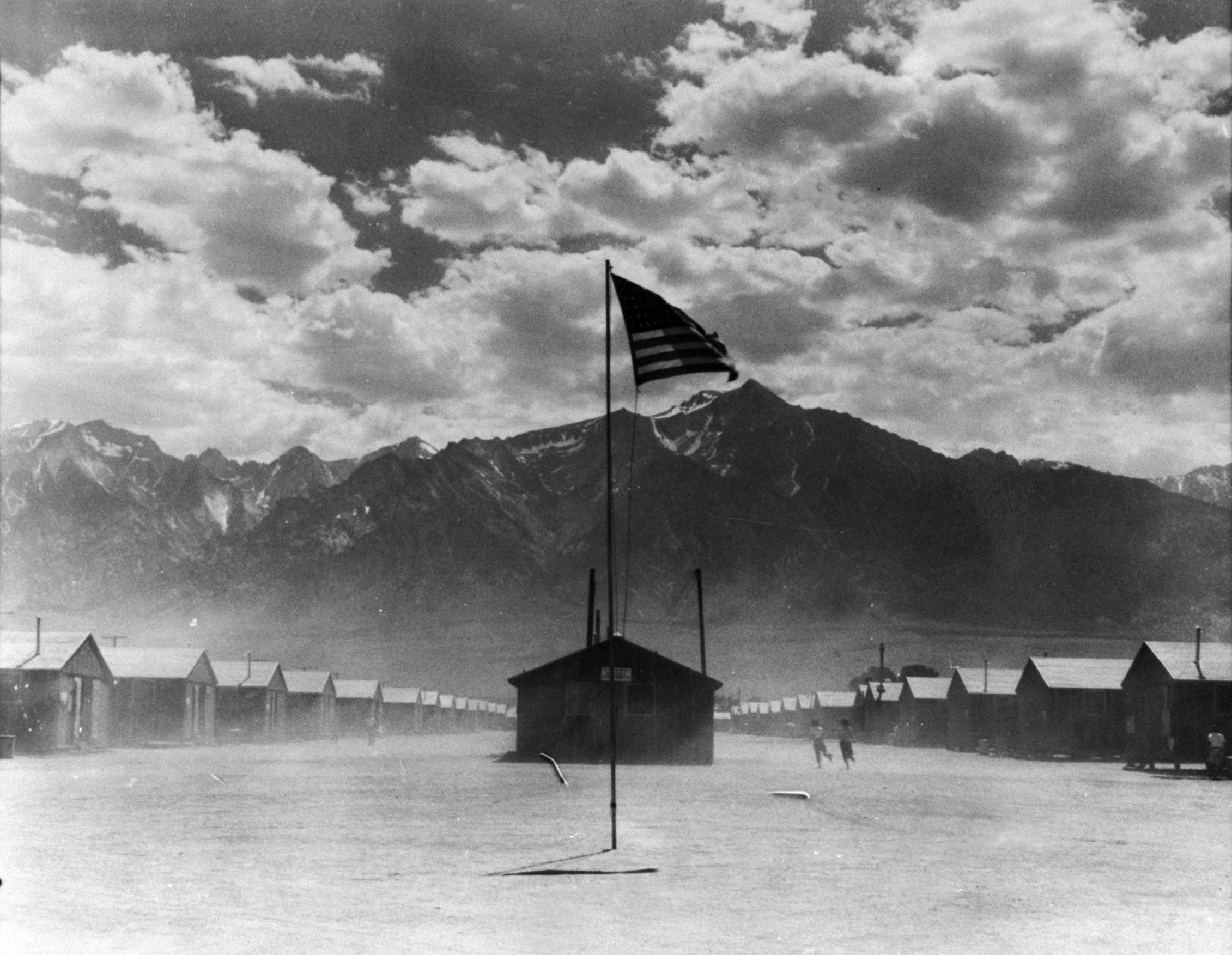
38. Japanese Americans in the Tule Lake incarceration camp in California:

39. Japanese Americans arrive at the incarceration camp in Tule Lake, CA:
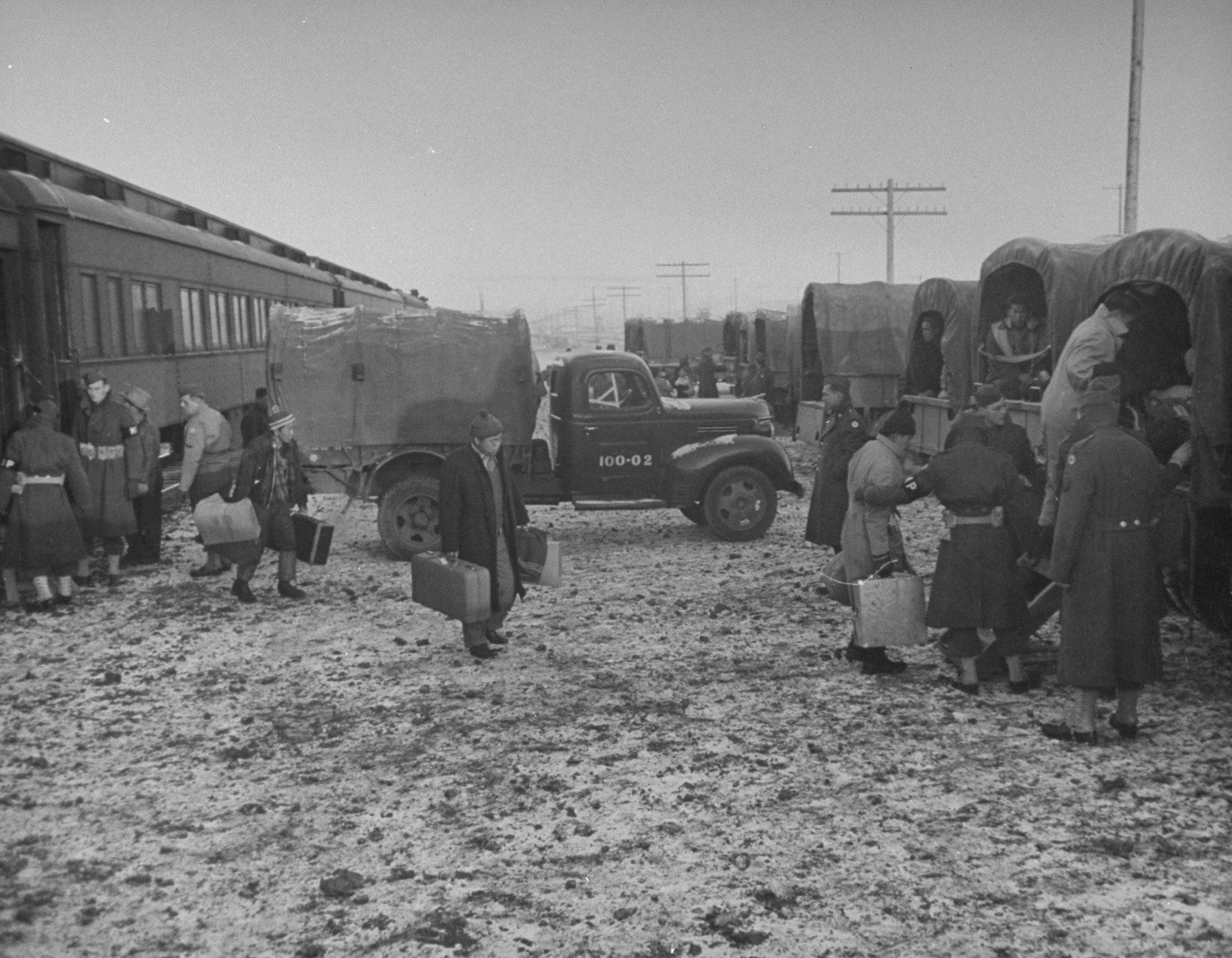
40. Children stand underneath a notice for "Civilian Restrictive Order No. 1" outside the Pinedale incarceration camp in Pinedale, CA:
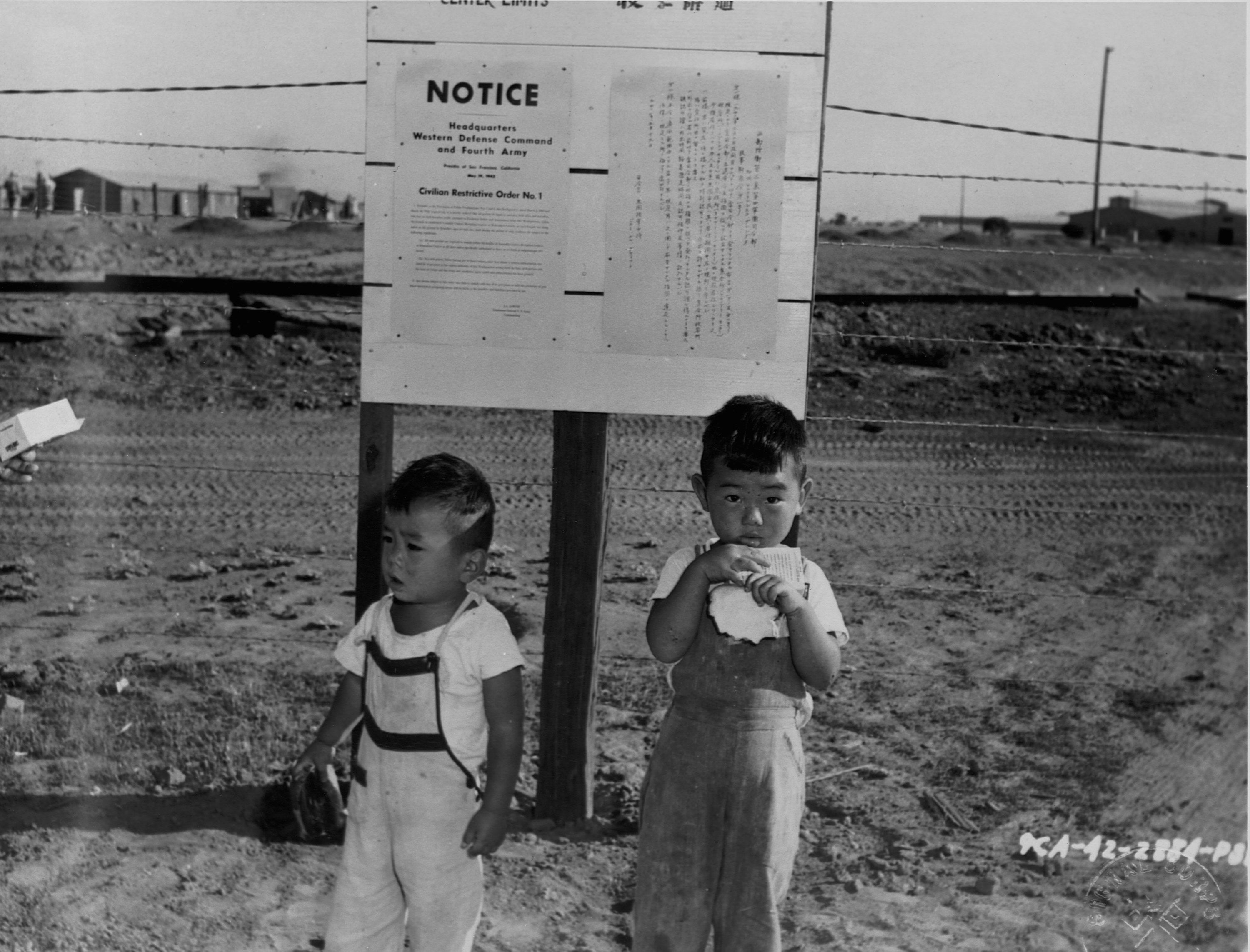
41. School at the Tule Lake internment camp:

42. Japanese Americans wait in line for food at the Santa Anita incarceration camp that had been converted from a racetrack in Arcadia, CA:
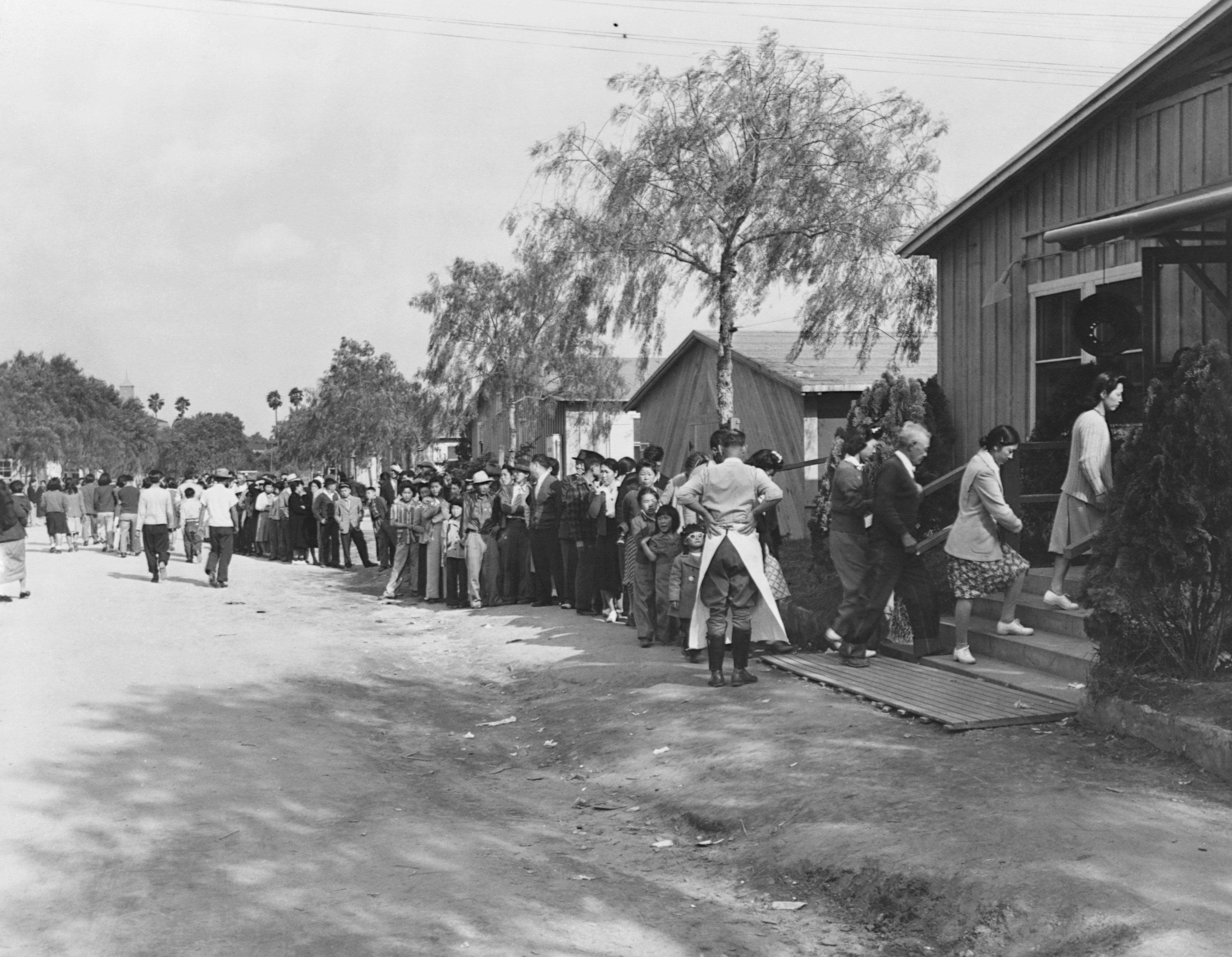
43. Japanese Americans walk through the incarceration camp in the snow, past a hand-made wood fence:
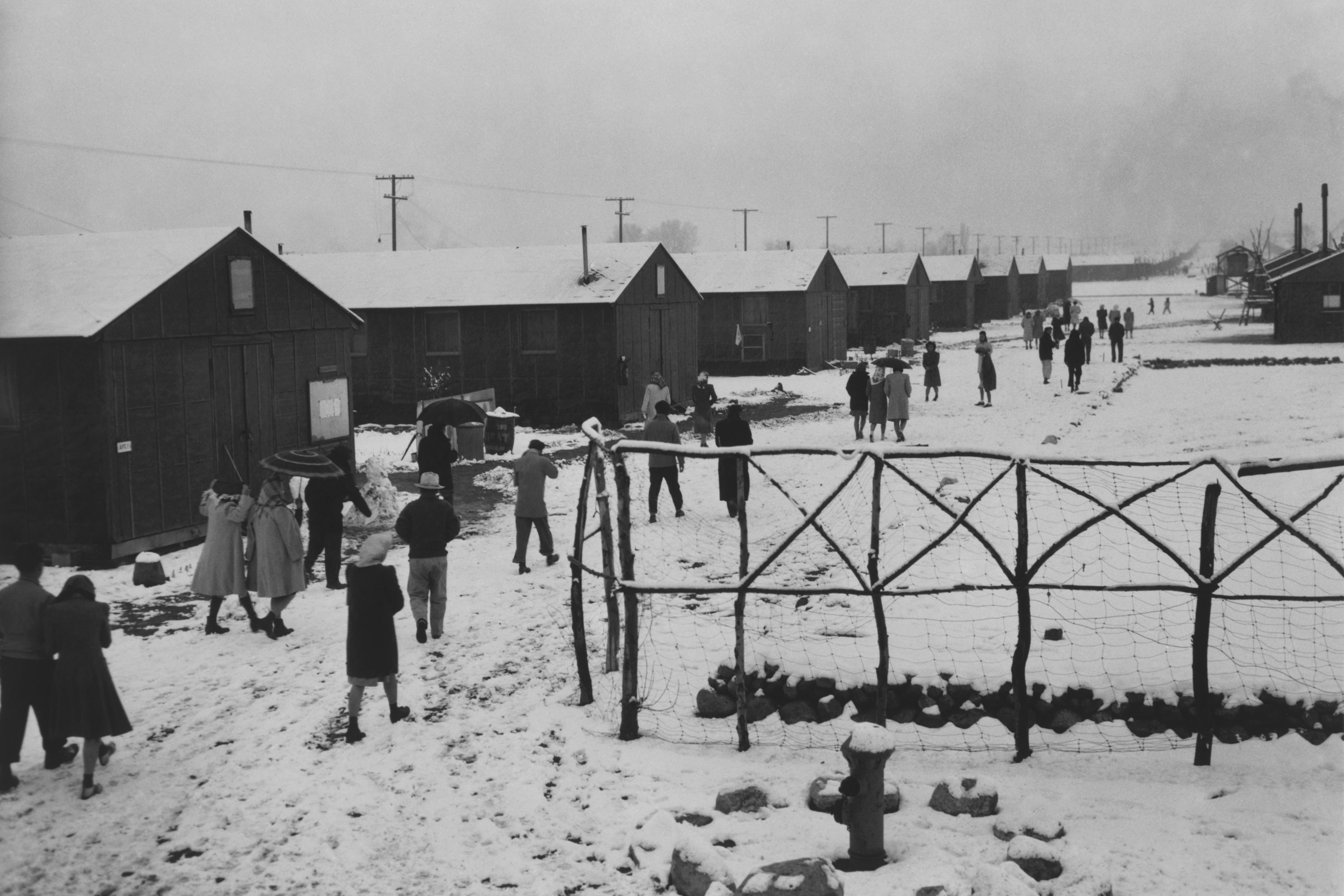
44. Japanese Americans wait for registration at the Santa Anita incarceration camp in Los Angeles County, CA:
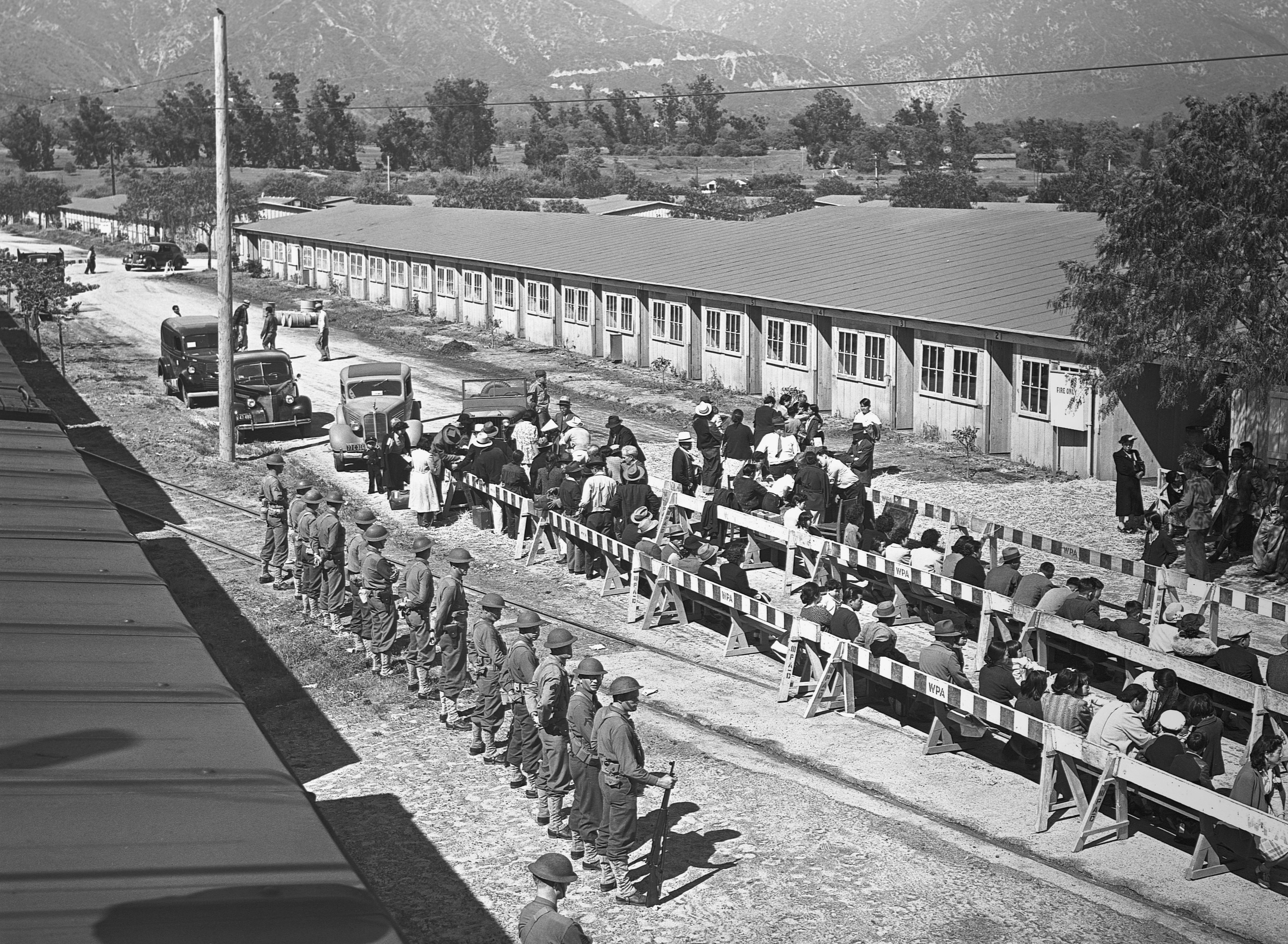
45. A group of children at the incarceration camp in Tule Lake, CA:
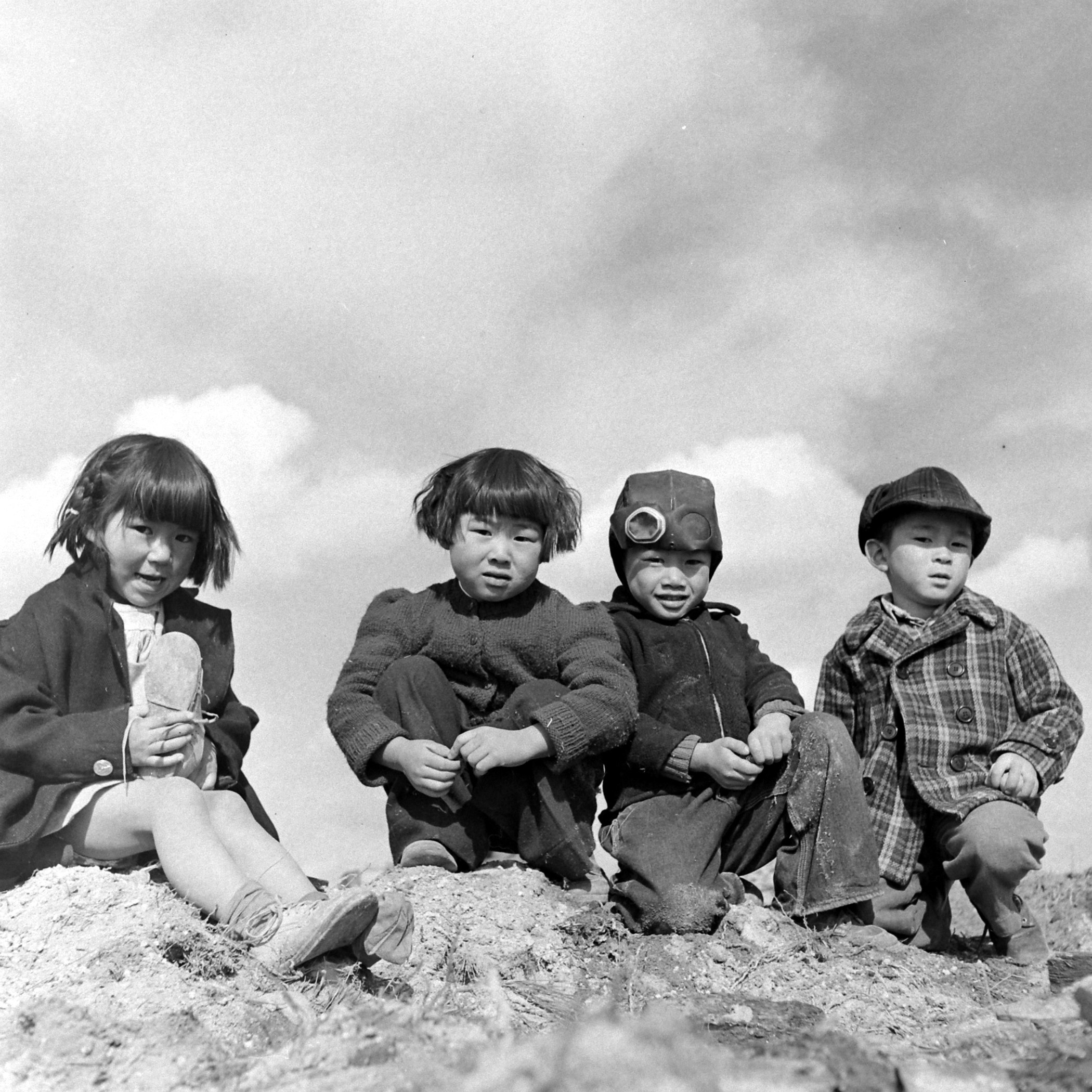
46. A baby being held by a nurse at the incarceration camp in Tule Lake, CA:
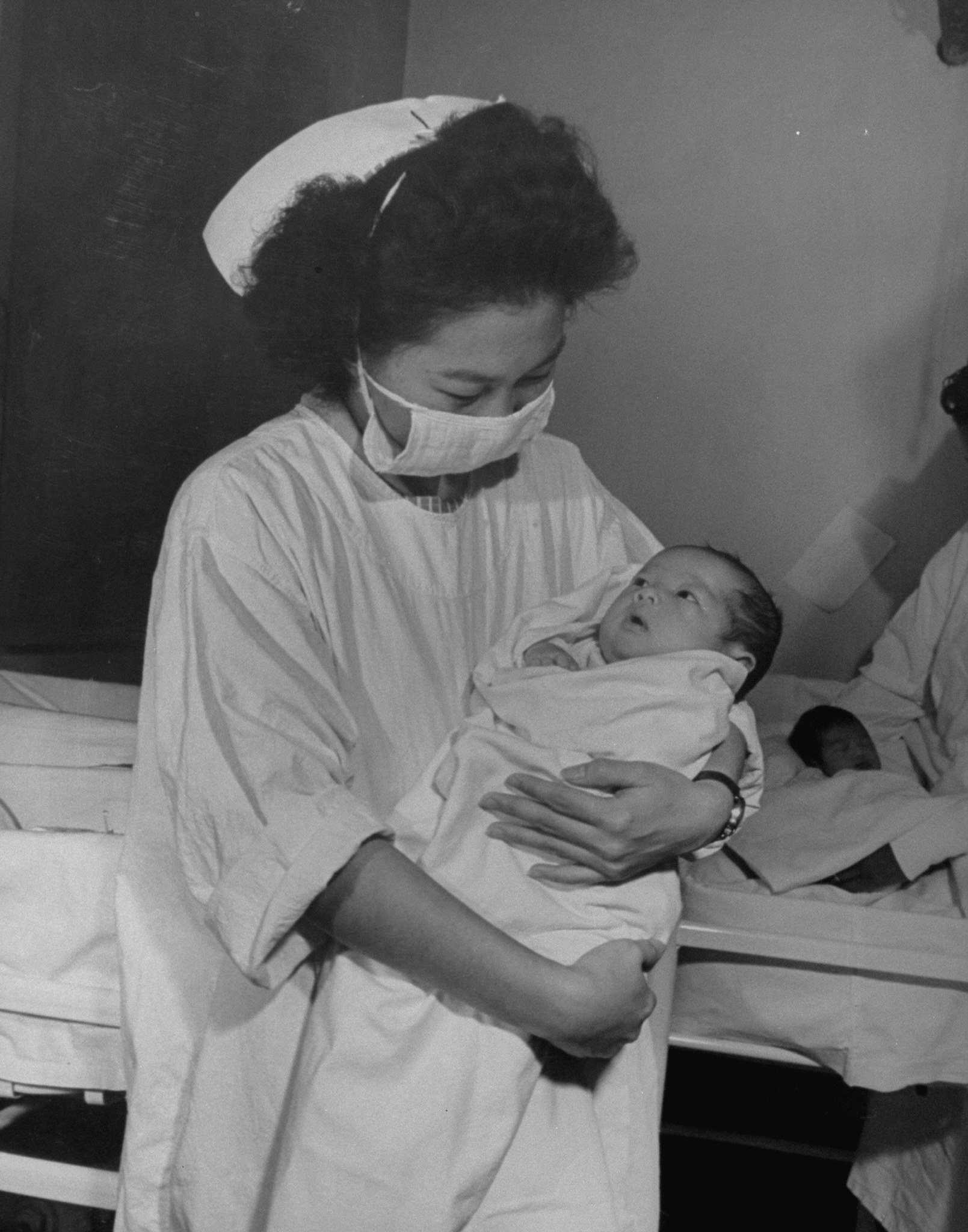
47. Japanese Americans at work in a cooperative shoe shop at the incarceration camp in Tule Lake, CA:
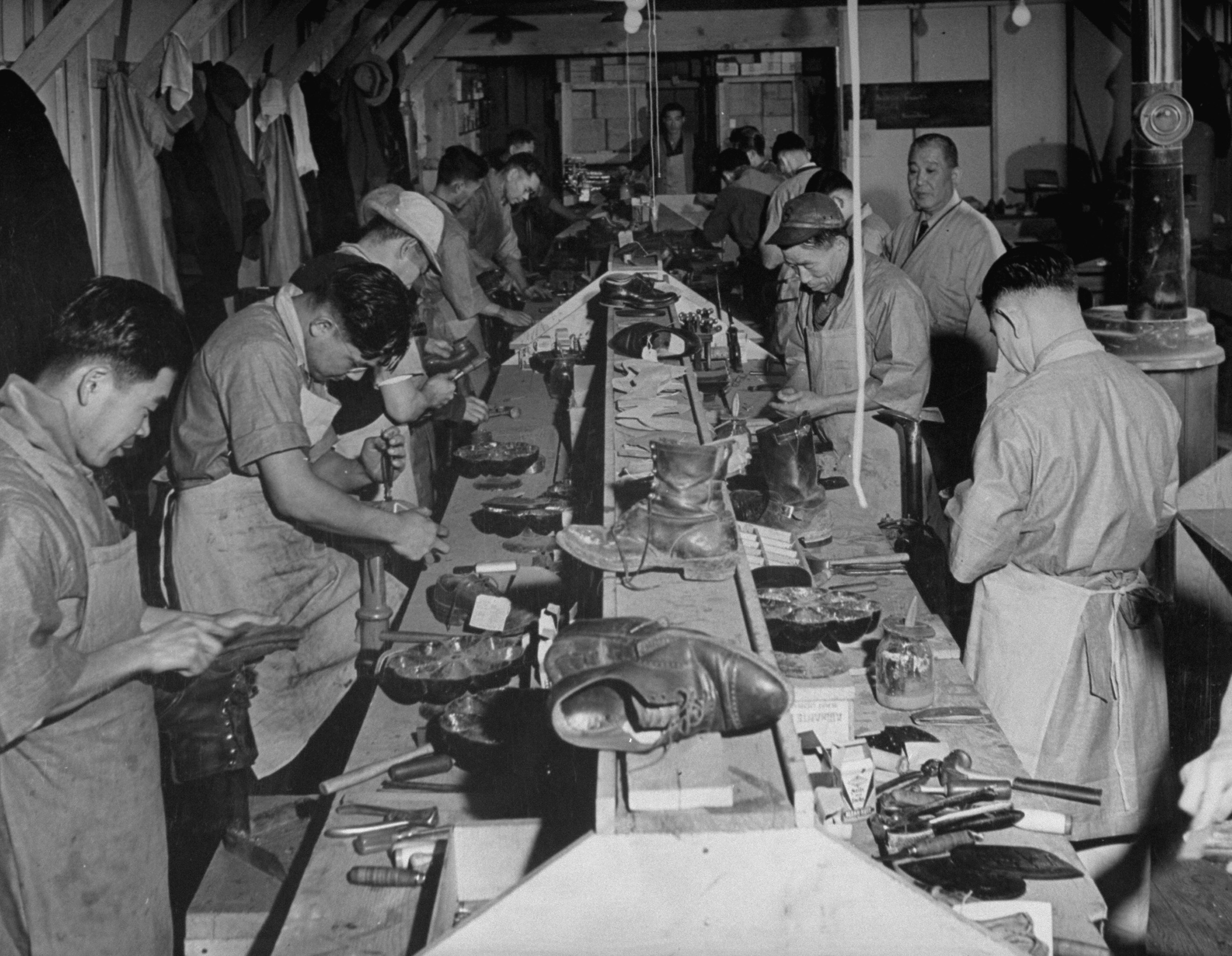
48. A dining hall at the incarceration camp in Tule Lake, CA:
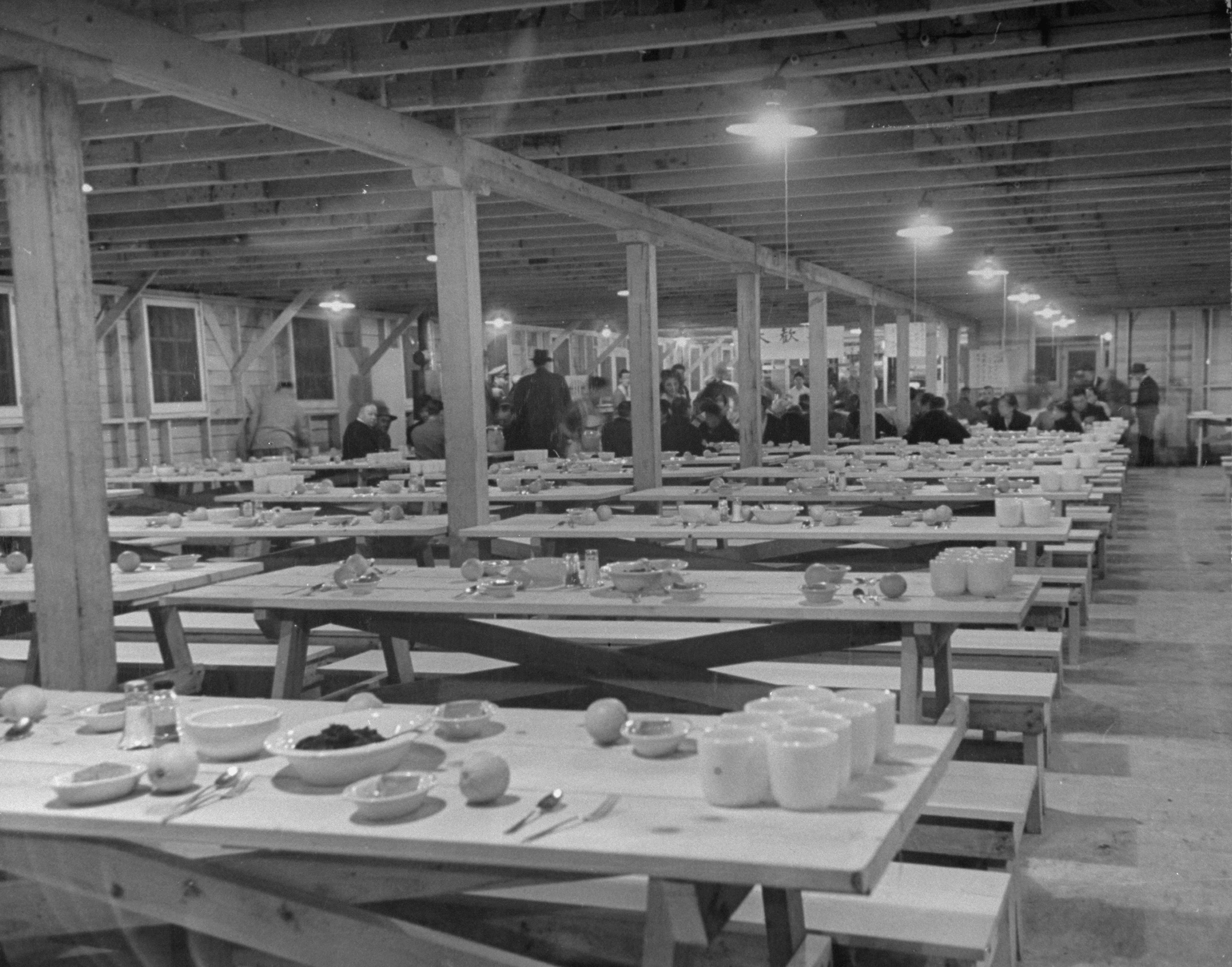
49. A Japanese American woman and child at the incarceration camp in Tule Lake, CA:
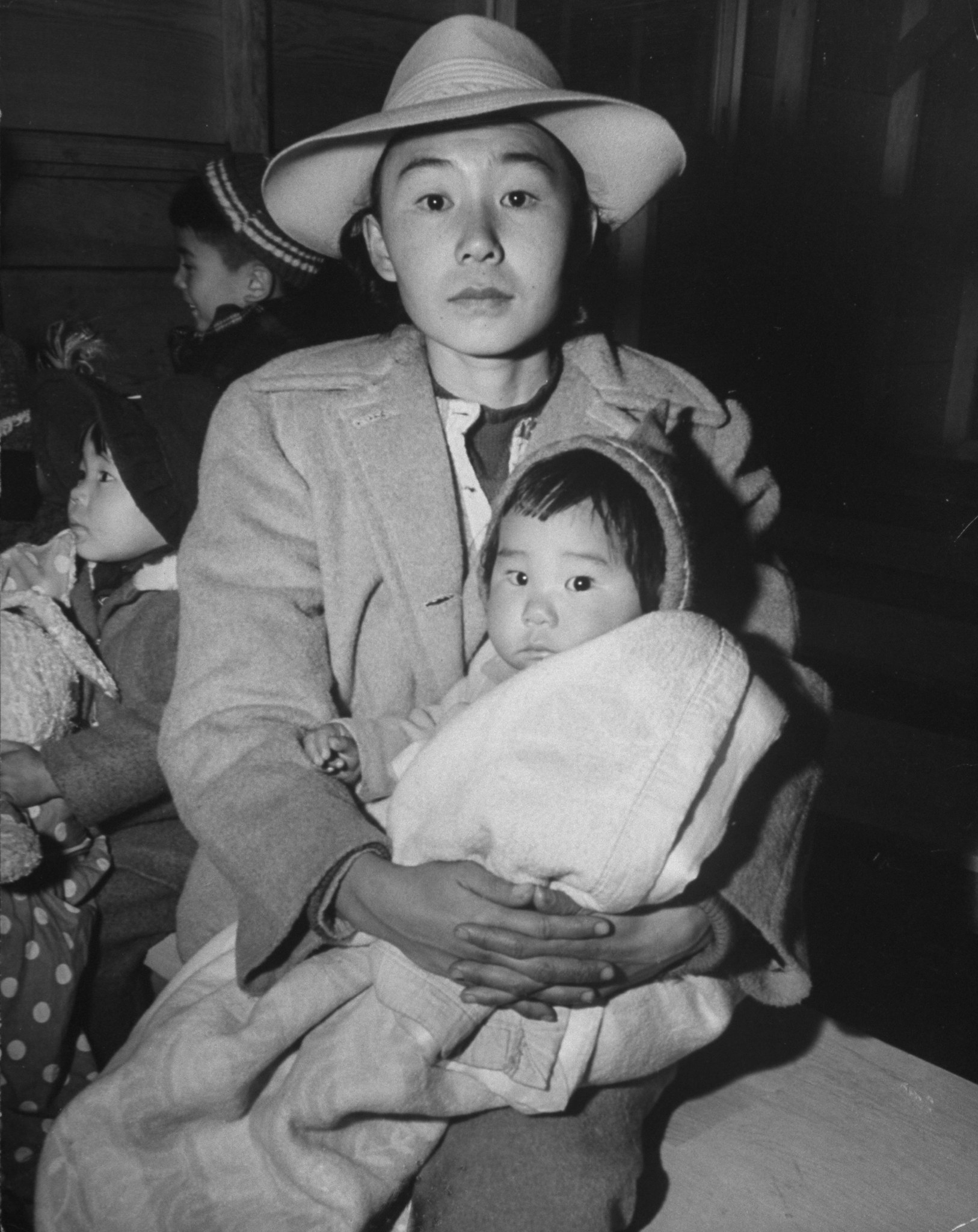
50. Kiyo Yoshida, Lillian Watkatsuki, and Yoshiko Yamasaki attend high school biology class in the Manzanar incarceration camp:
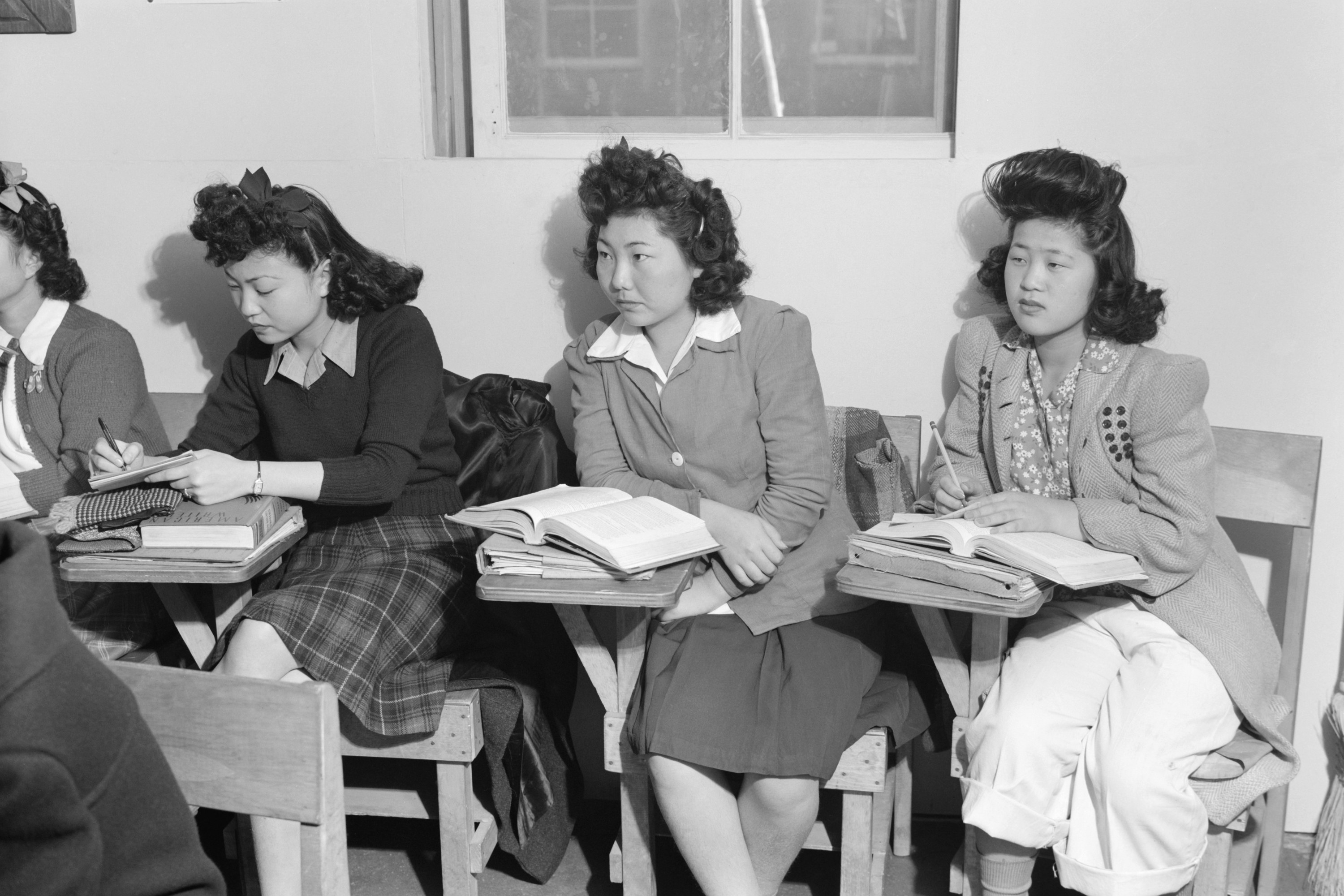
51. Three Japanese American men stand outside an office of reports in an incarceration camp while reading the newspaper:
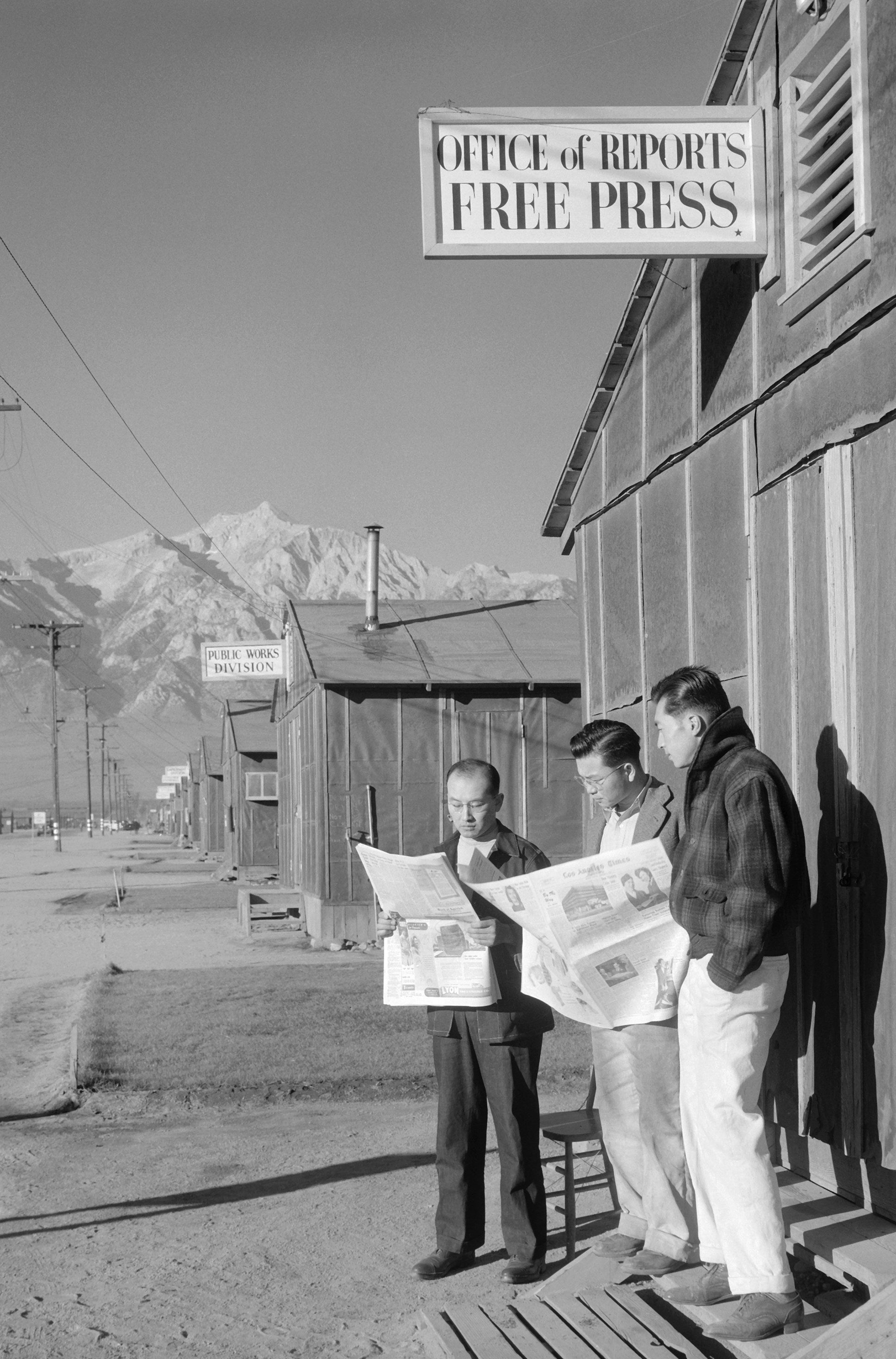
52. Japanese American men gather around a fire engine at the fire station in the incarceration camp in Tule Lake, CA:
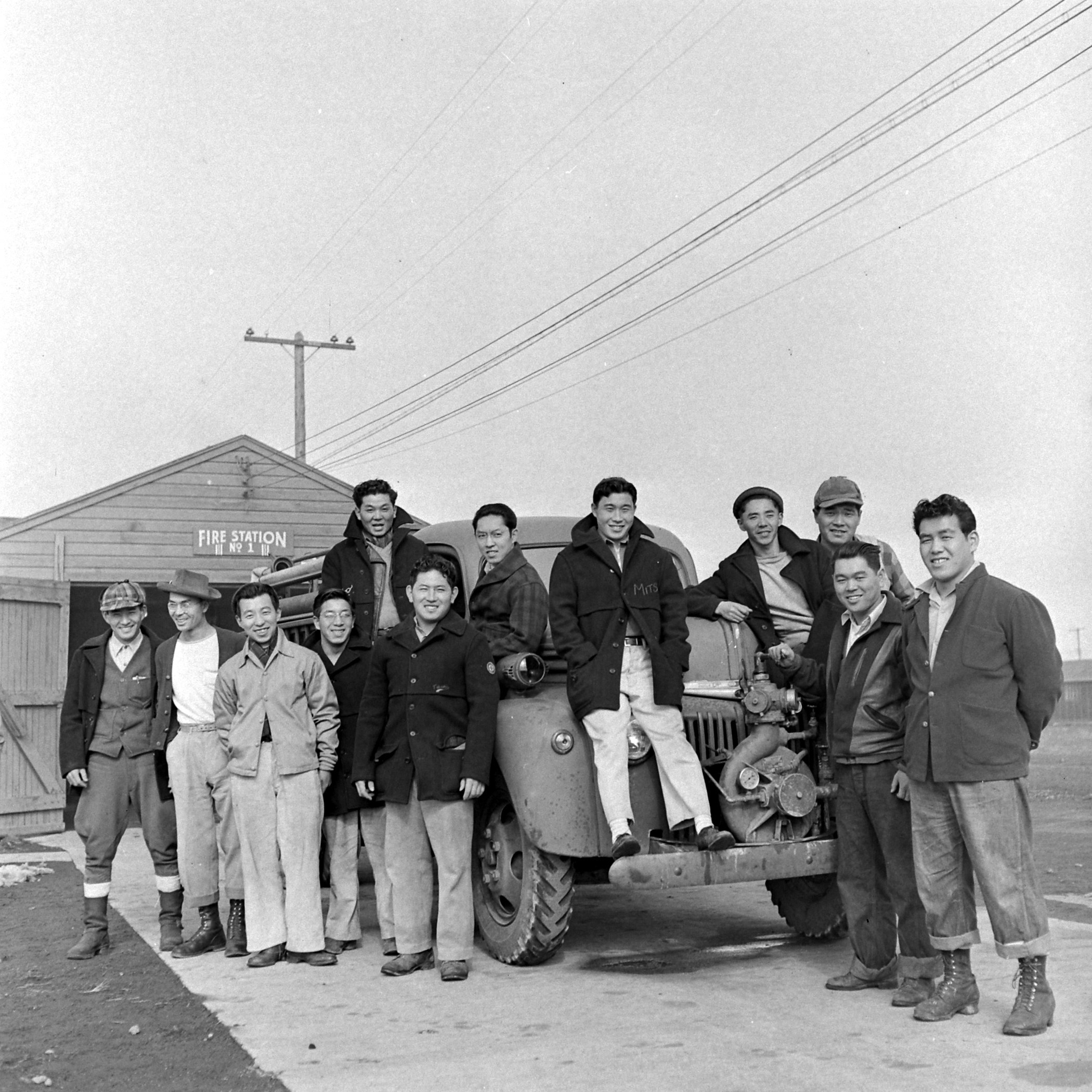
53. Japanese American men play a game of volleyball at the incarceration camp in Tule Lake, CA:
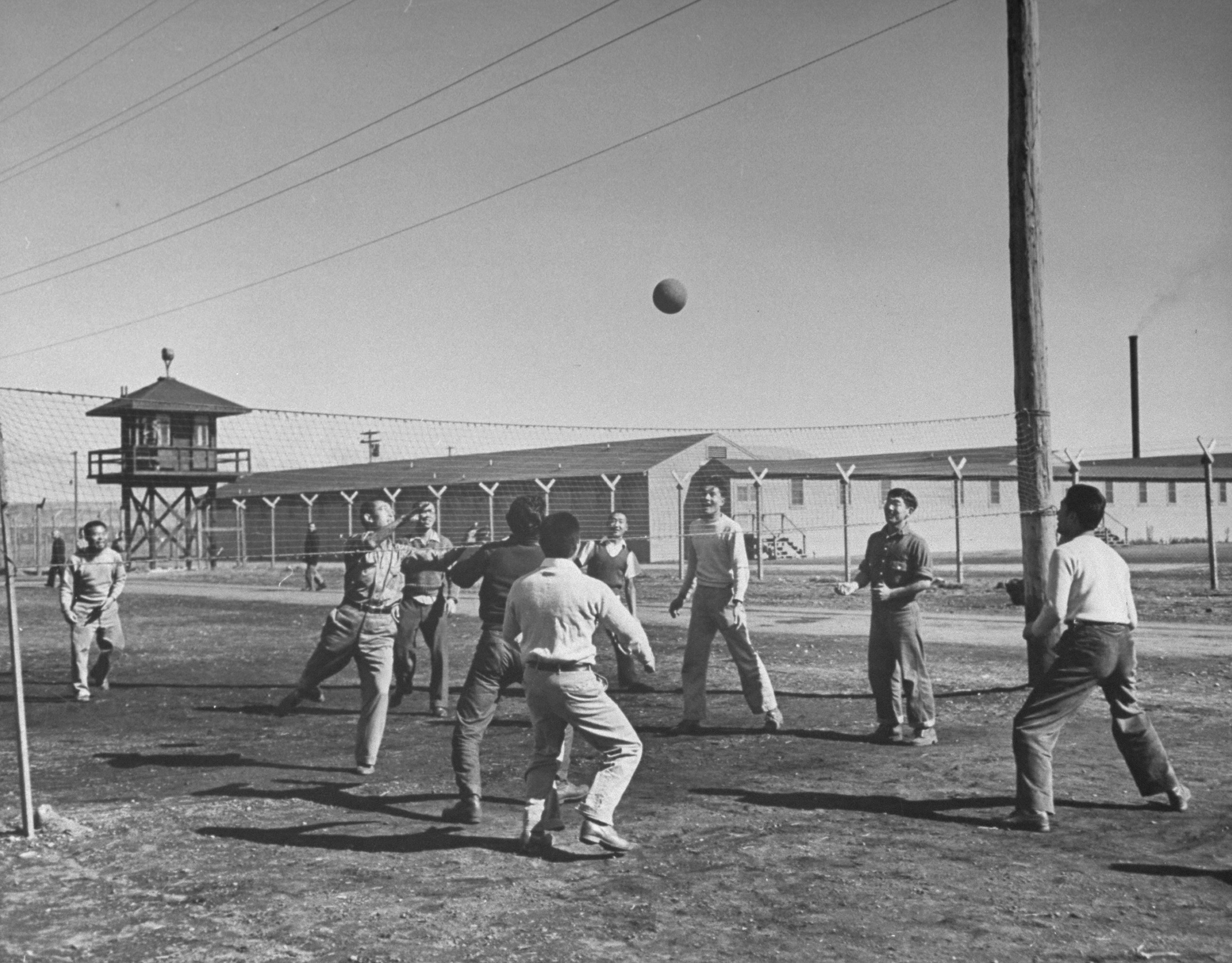
54. Japanese American men clean up around the incarceration camp in Manzanar, CA:

55. Japanese American women sew clothes at the cooperative dress and coat shop at the incarceration camp in Tule Lake, CA:
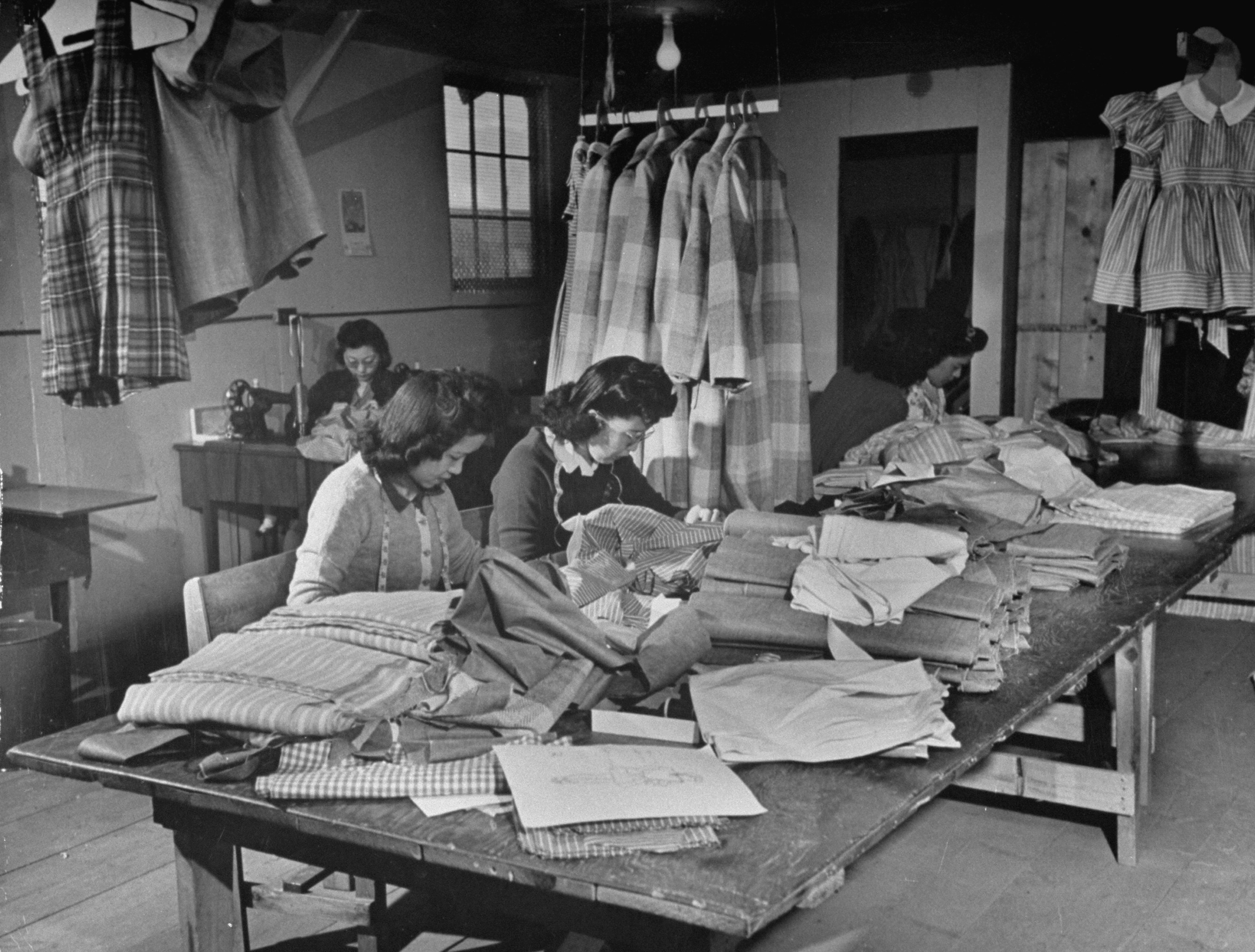
56. A game of basketball at the incarceration camp in Tule Lake, CA:

57. Japanese Americans register on arrival at the Santa Anita incarceration camp:

58. Japanese American linemen work on a pole at the Manzanar incarceration camp:
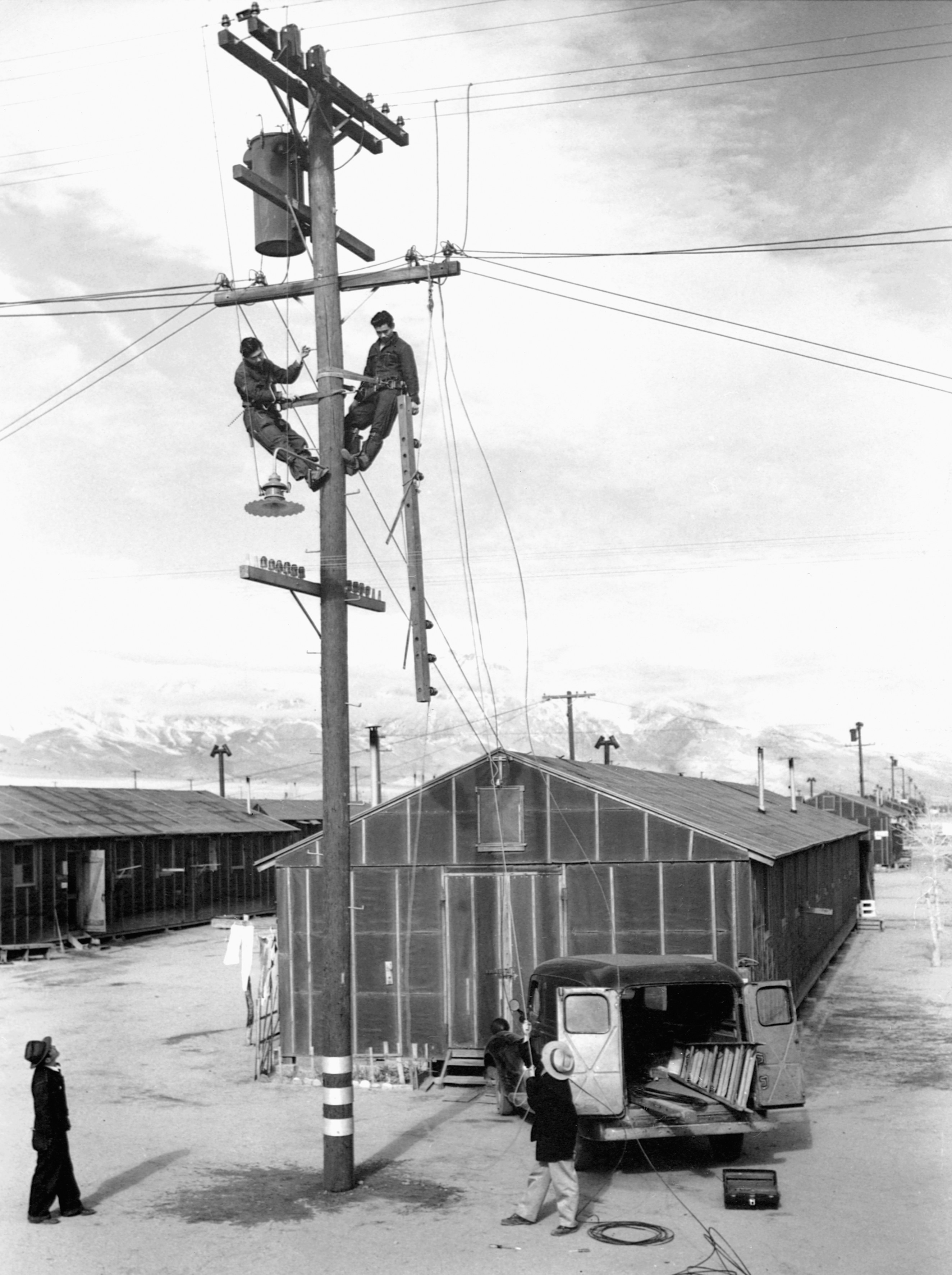
59. Storage room at the incarceration camp in Tule Lake, CA:
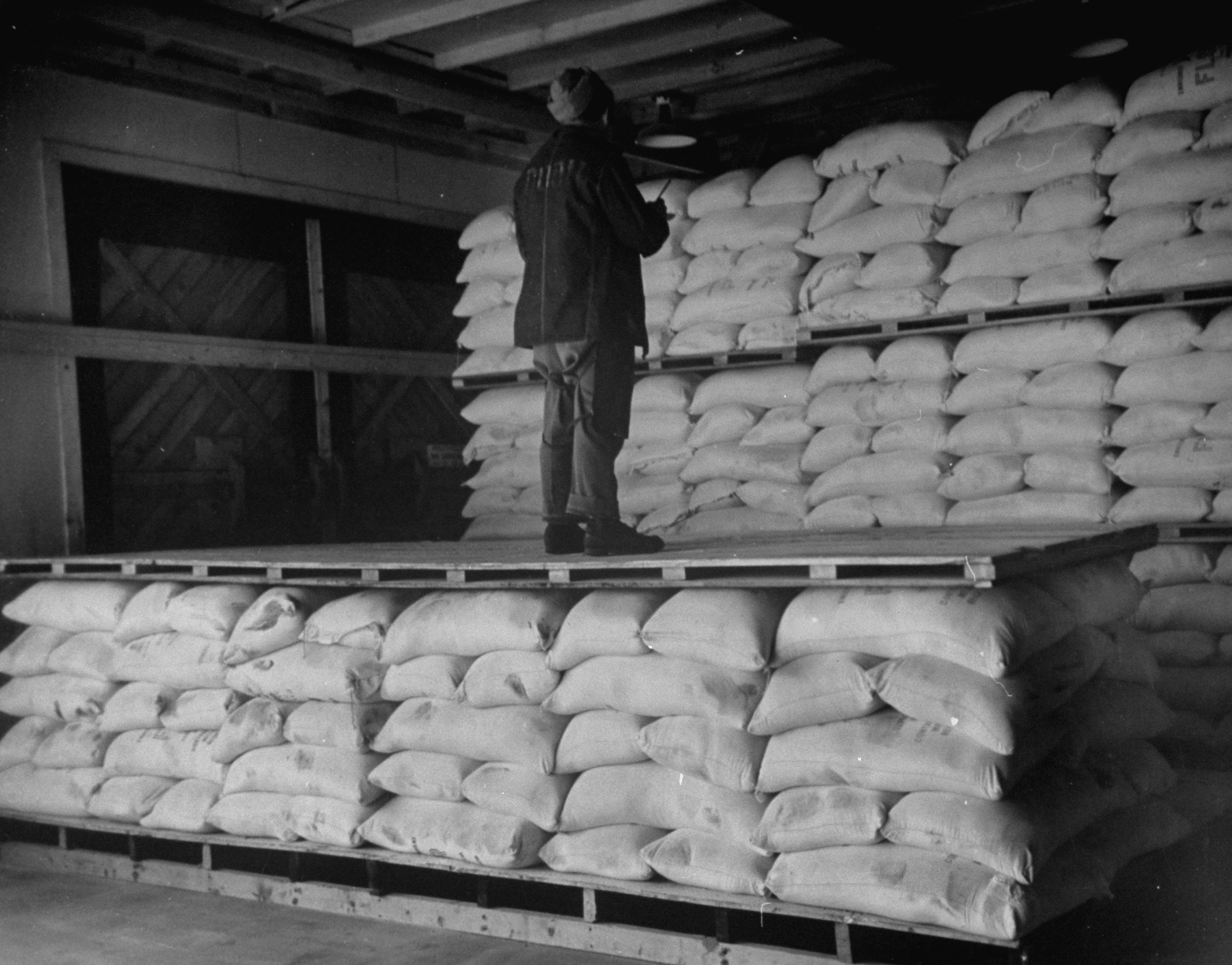
60. A Japanese American family seated at a table in an incarceration camp:

Following the attack on Pearl Harbor, the US classified all Japanese Americans as "IV-C" or "enemy aliens," and they were therefore not allowed to enlist in the armed forces.
Despite being forced into incarceration camps, many Japanese Americans fought to convince the Roosevelt administration to allow them to enlist. As a result, the segregated 442nd Regimental Combat Team (RCT) was formed.
The 442nd RCT comprised entirely of Nisei — two-thirds from Hawaii and one-third from the mainland US. Their motto was, "Go for broke." The 442nd RCT went on to become the most decorated unit in U.S. military history for its size and length of service.
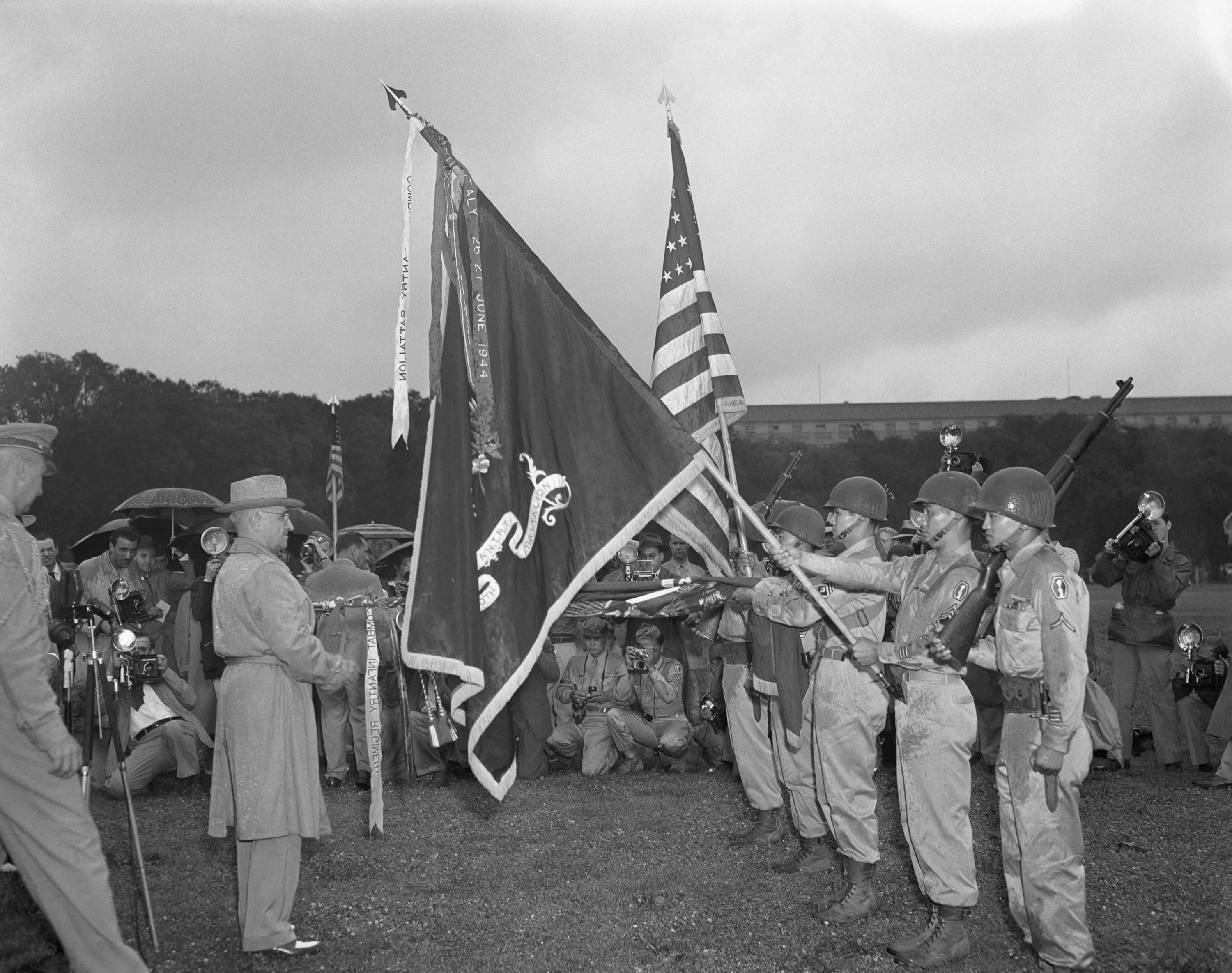
Check out how BuzzFeed is celebrating Asian Pacific American Heritage Month! And follow @buzzfeedapop on Instagram!


